Heavy Cruiser SMS Victoria Louise
Victoria Louise captivates with her pleasing form and the fabulous color scheme. The model simply is fun to build. Even though it is designed for the modeler with a bit more experience.
Scale: 1:250
Designer: Markus Wiekowski
Skill Level: very difficult
Parts: 1713
Length: 450 mm (17.72 inch)
Width: 80 mm (3.15 inch)
Height: 170 mm (6.69 inch)
Instruction: German, English, Illustrations
Format: DIN A4
Sheets: 16
Item no.: 3028
Edition: 3rd Edition 2015
The model highlights:
- rotable cannons
- filigree stern balcony
- Searchlights in ships's side
- steam barges and dinghies
- helmstand with interior
- movable casemate guns
- with rudder position indicator
Markus Wiekowski did a great job with this timeless and beautiful model. The distinctive hull from a time where ships, houses and cars still had decoration everywhere was not easy to transform into a papermodel. And the interesting form of the superstructure and masts is quite challenging to build. But it‘s definitely worth the effort.
In the end this model is a good build and is probably a good start to build the series of cruisers and battle ships of the first world war from HMV. The attractive color scheme and the interesting hull makes this model a „must have“ for every collector.
Technical data:
- Launch: 29.3.1897 as Neubau Kreuzer II. Klasse »L« at A.G. Weser, Bremen
- Commissioning: 20.2.1899
- Length: 110,6 m
- Width: 17,4 m
- Displacement: 5.660 t
- Armament: 2 automatic cannons 21 cm, 8 automatic cannons 15 cm, 10 automatic cannons 8,8 cm, 10 small automatic cannons, 3 torpedo tubes 45 cm
- Class: Cruiser 2nd class»L« since 1899 Heavy Cruiser
- Sisters: Hertha, Freya, Vineta, Hansa
- Crew: 31 officers und 446 seamen
In the 90's of the 19th century Germany had to make an important decision. A fleet of battle ships or of cruisers. The command of the fleet with Captain Tirpitz (later state secretary) wanted battle ships while the emperor preferred a cruiser fleet. The plan was to build 30 2nd class cruisers but after Tirpitz took over command of the fllet only five ships of the Victoria Luise class were built. The heavy cruiser Victoria Louise was launched on 29th of March, 1897 at A.G. Weser in Bremen. She was named after the princess of Prussia, the only daughter of emperor Wilhelm II. and empress Auguste Victoria and she was commissioned on 20th of February, 1899. Several improvements were necessary though which took place in September 1899 on the imperial shipyard in Wilhelmshaven. It was not until the 22nd of August, 1900 that Victoria Luise was commissioned again.
In 1901 Victoria Louise took part in Great Britain's funeral cortege of the fleet for Queen Victoria. From 20/04/1901 until 28/02/1903 she belonged to the I. cruiser squadron and together with cruisers Amazone and Hela she formed the first reconnaissance squadron. From 1/03/1903 Victoria Louise belonged to the new reconnaissance task force. She was deployed to visit Vigo in Spain. And on the 12th of December, 1903 she was already decommissioned. Visually Victoria Louise with her strong mast and her prominent bos mad an enourmos impression but because of the insufficient armor plating and the missing space for coal this ship was simply unsuitable for service in the fleet. As the training ships had to be replaced anyway but funds for new constructions were unavailable Victoria Luise took over that place. From 1906 till 1908 she was redesigned in Wilhelmshaven to suit that task. One funnel was dismounted and the heavy forward mast was replaced by a lighter version.
As training ship Victoria Louise went on an overseas journey for several months. On board was a scientific committee because the ship was supposed to take part in the research of the international series of balloon launches for exploring the higher atmosphere. On of the balloons launched from Victoria Louise reached the highest level with 21,800 m. Severel journeys took Victoria Louise to countries in Europe, America, and West India. From 31st of October until 8th of November, 1912 she made berth in Veracruz in order to protect German citizens during the political uprising in Mexico. With the start of 1st World War Victoria Louise switched to the 5th reconnaissance task force. She was decommissioned on 28th of October, 1914 again due to her insufficient armor plating. She had loose the cannons and stayed in Gdansk as stock for mines and habitat ship. On the 1st of October, 1919 she was swept from the list of war ships and sold. 1920 she was converted to a cargo vessel named Flora Sommerfeld as which she served until 1922. In 1923 she was scrapped.
Our model shows Victoria Louise in the state of 1901 and it was designed based on the plan in 1/100 from Dipl.-Ing. Wolfgang Bohlayer and various photos and paintings.
HMV Lasercut Sets are especially designed for a particular HMV model as an additional but optional detail set. The laser cut parts replace parts of the original kit with more filigree and already cut out versions. Sometimes additional parts are included as well. Building your model with a Lasercut Set is easier and more detailed at the same time. But the Lasercut Set is not necessarily needed to build the model.
The material we use is high quality and already coloured paper. Thus it is not necessary to paint the laser cut parts. We recommend though to colour white parts before using them, as during the laser process burn marks might occur.

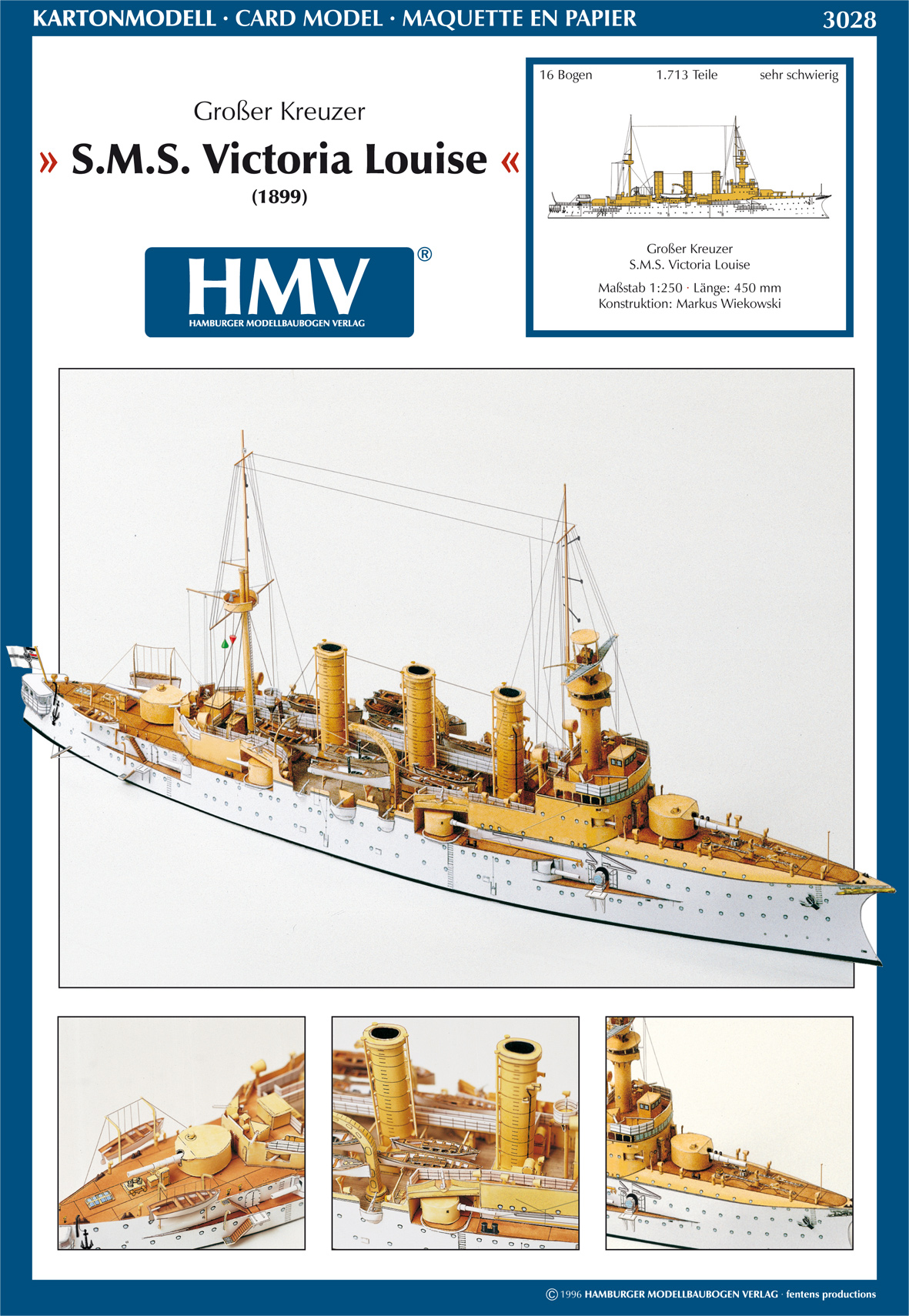
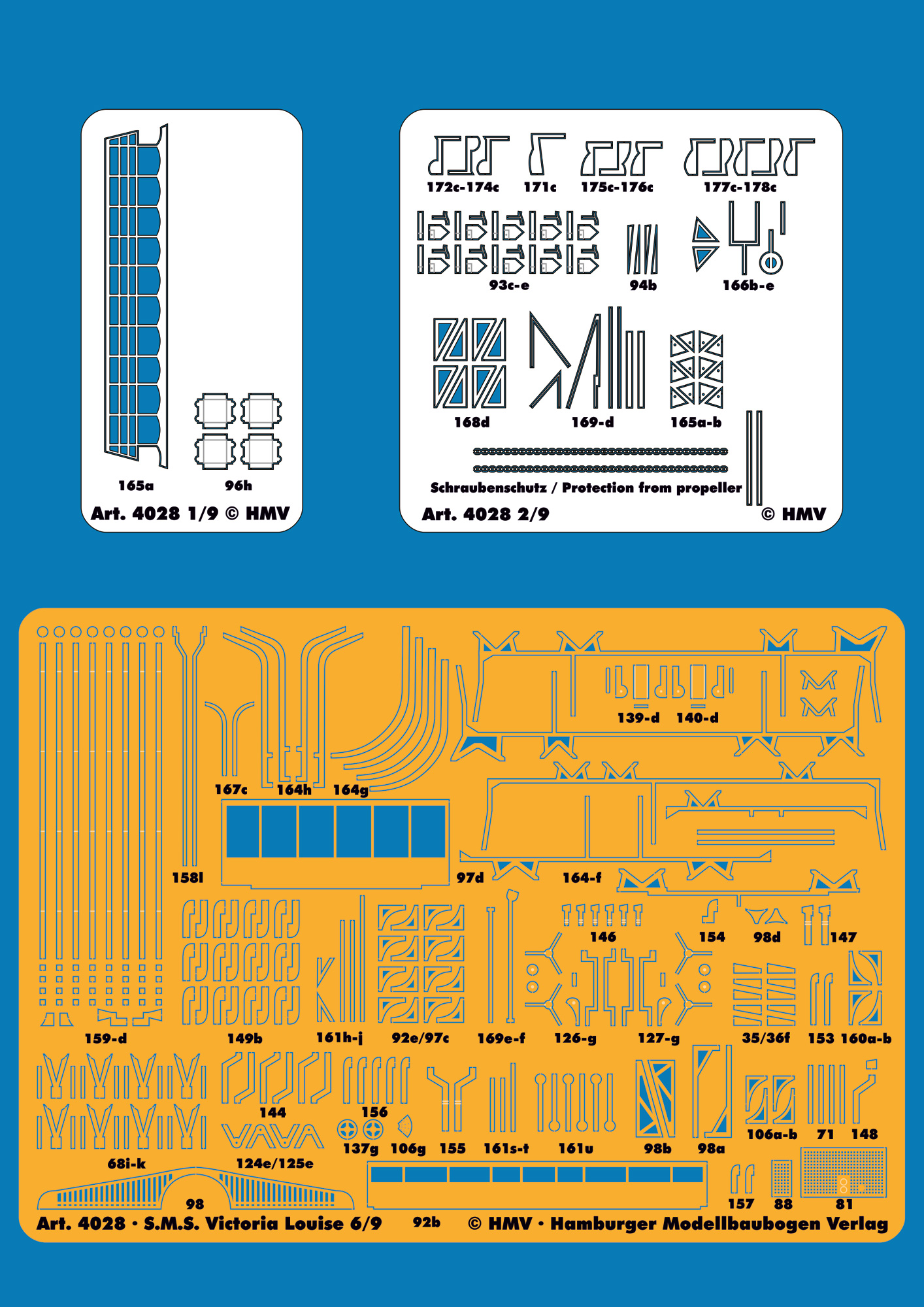
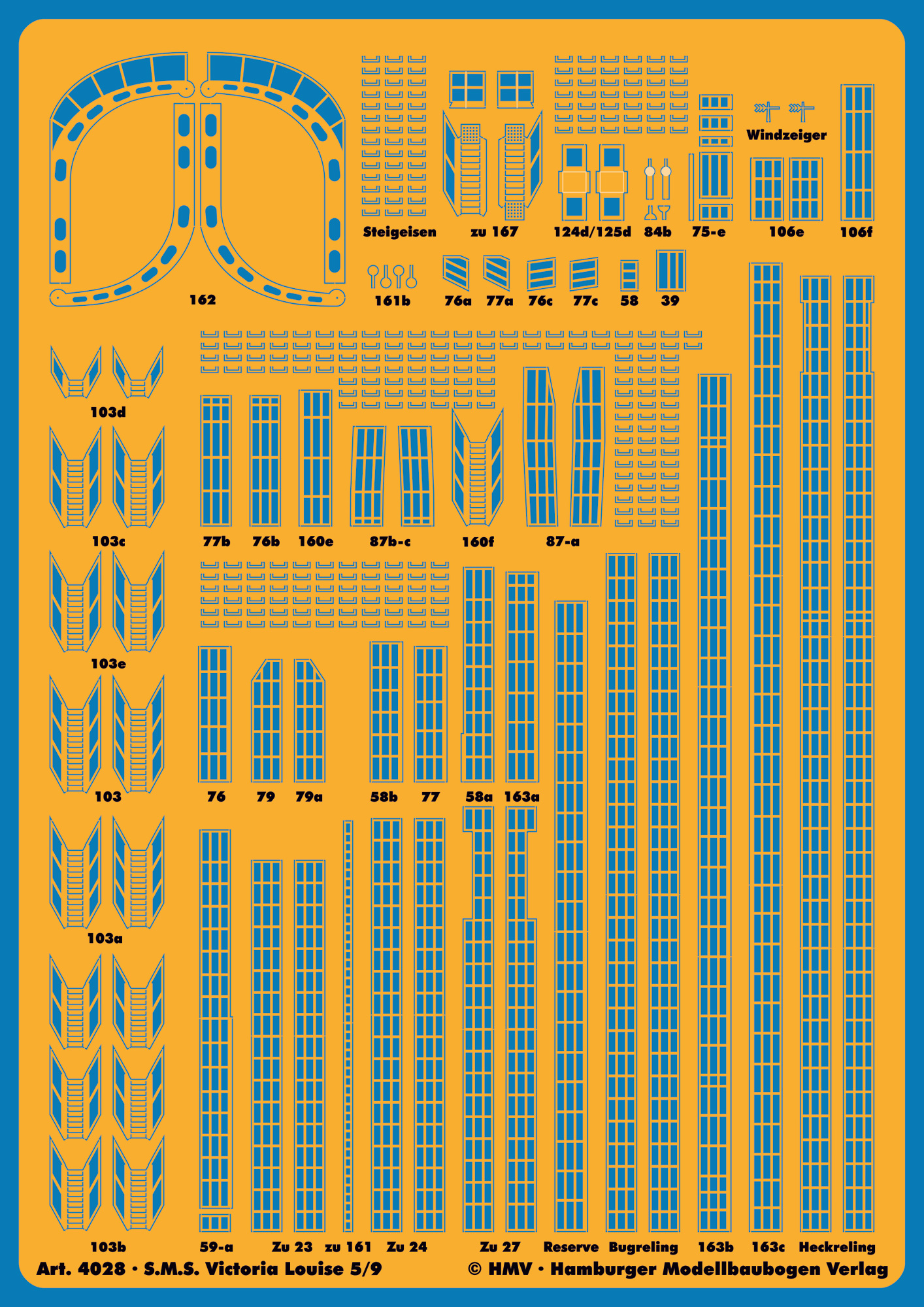
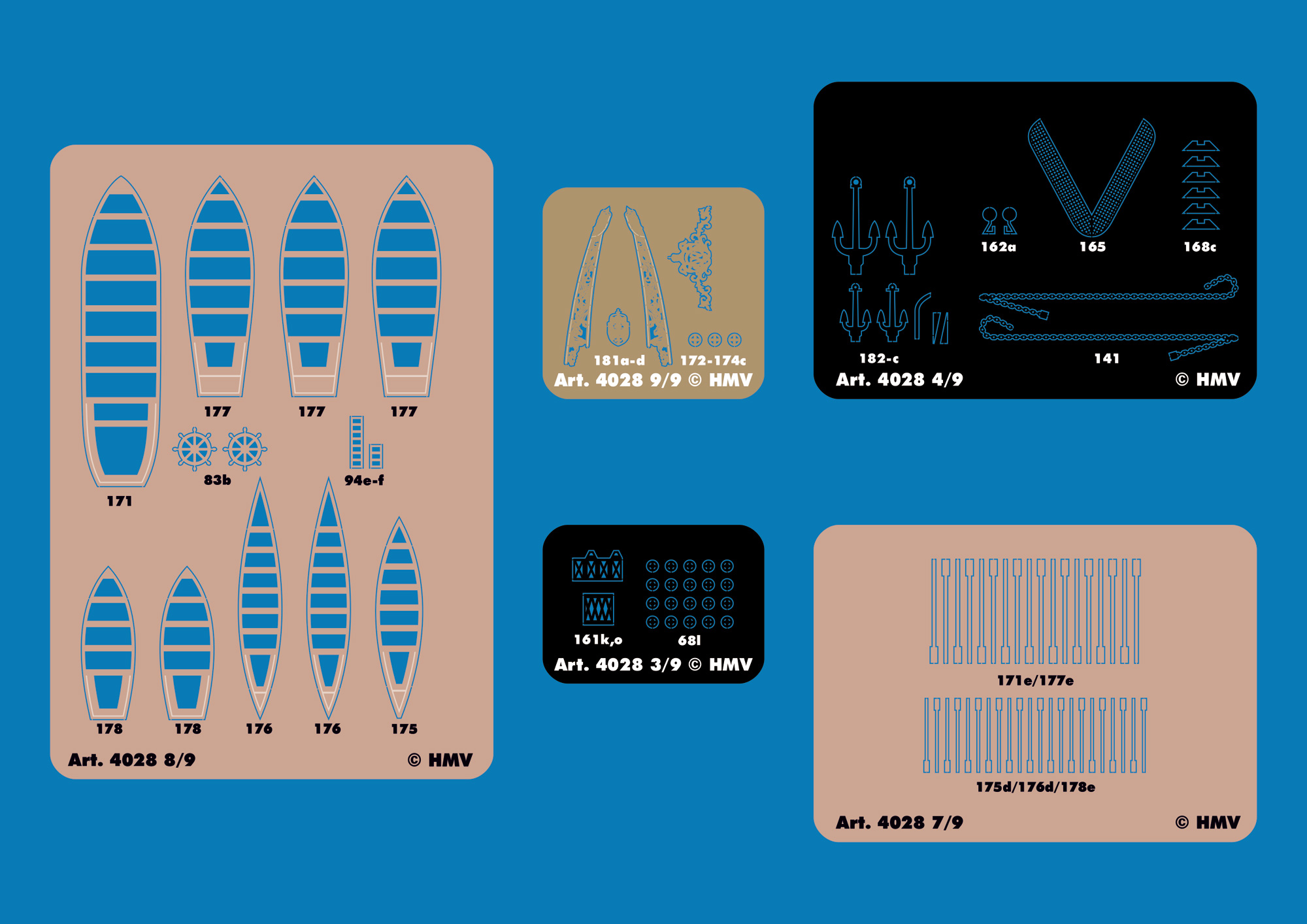
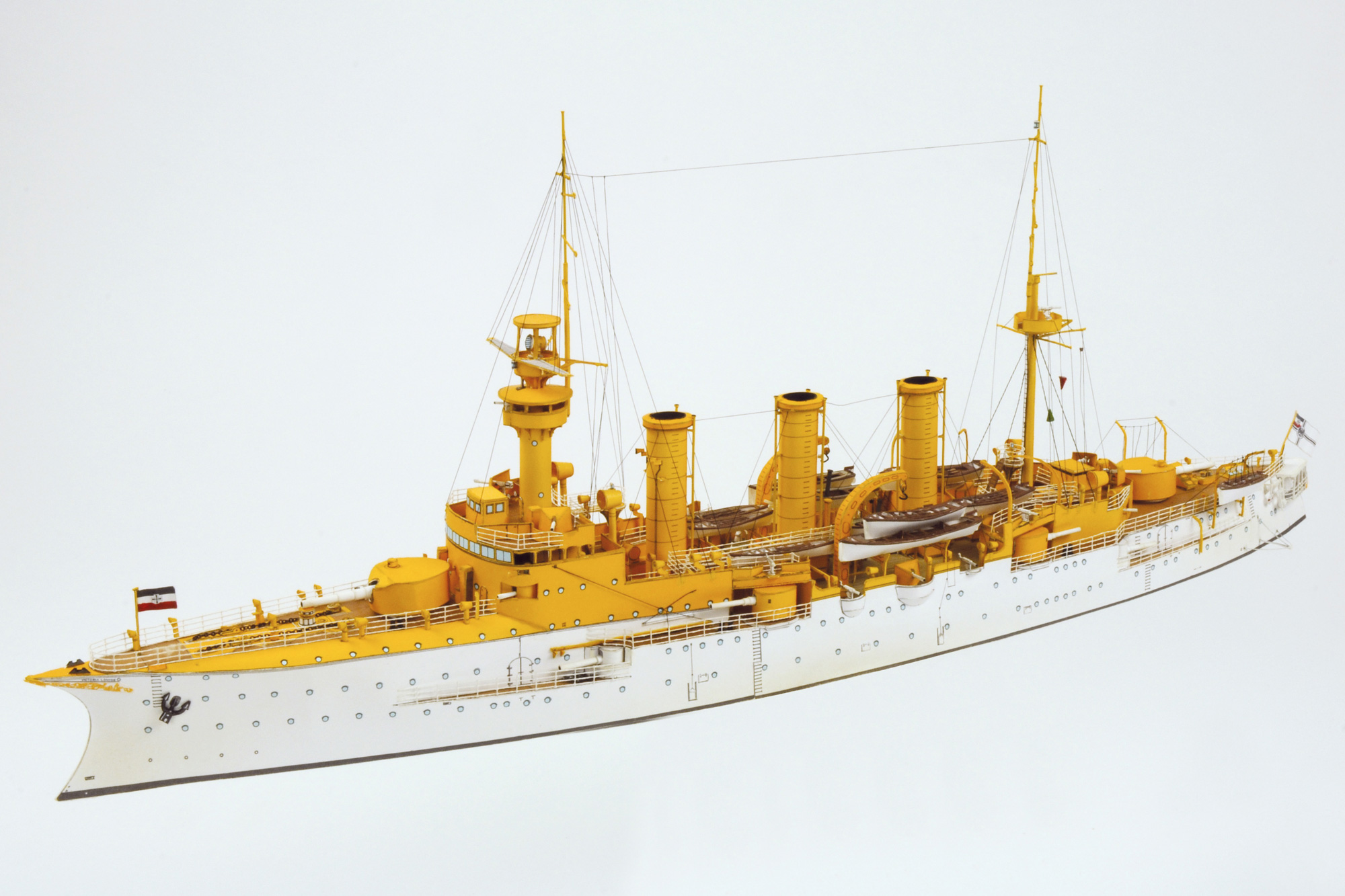
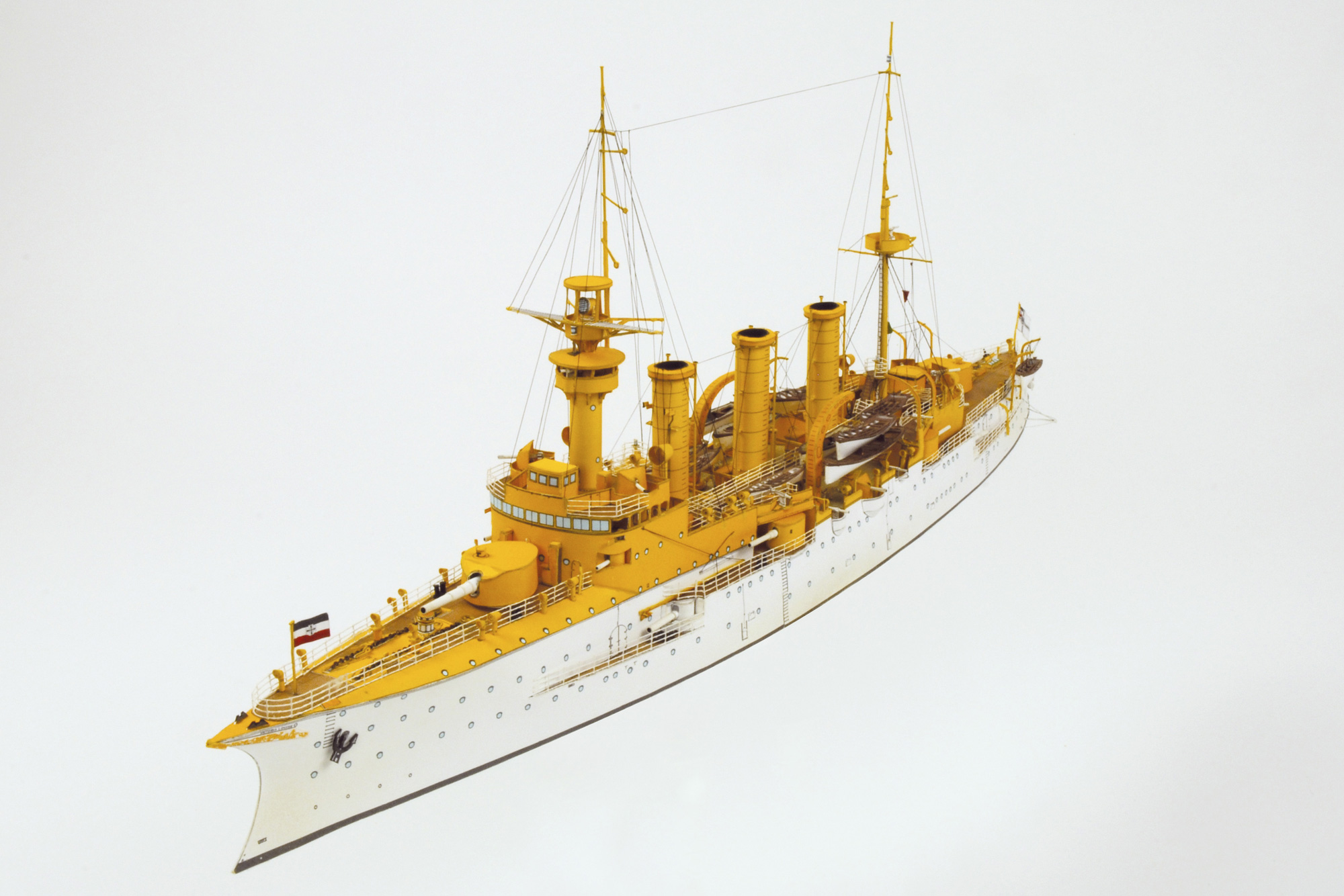
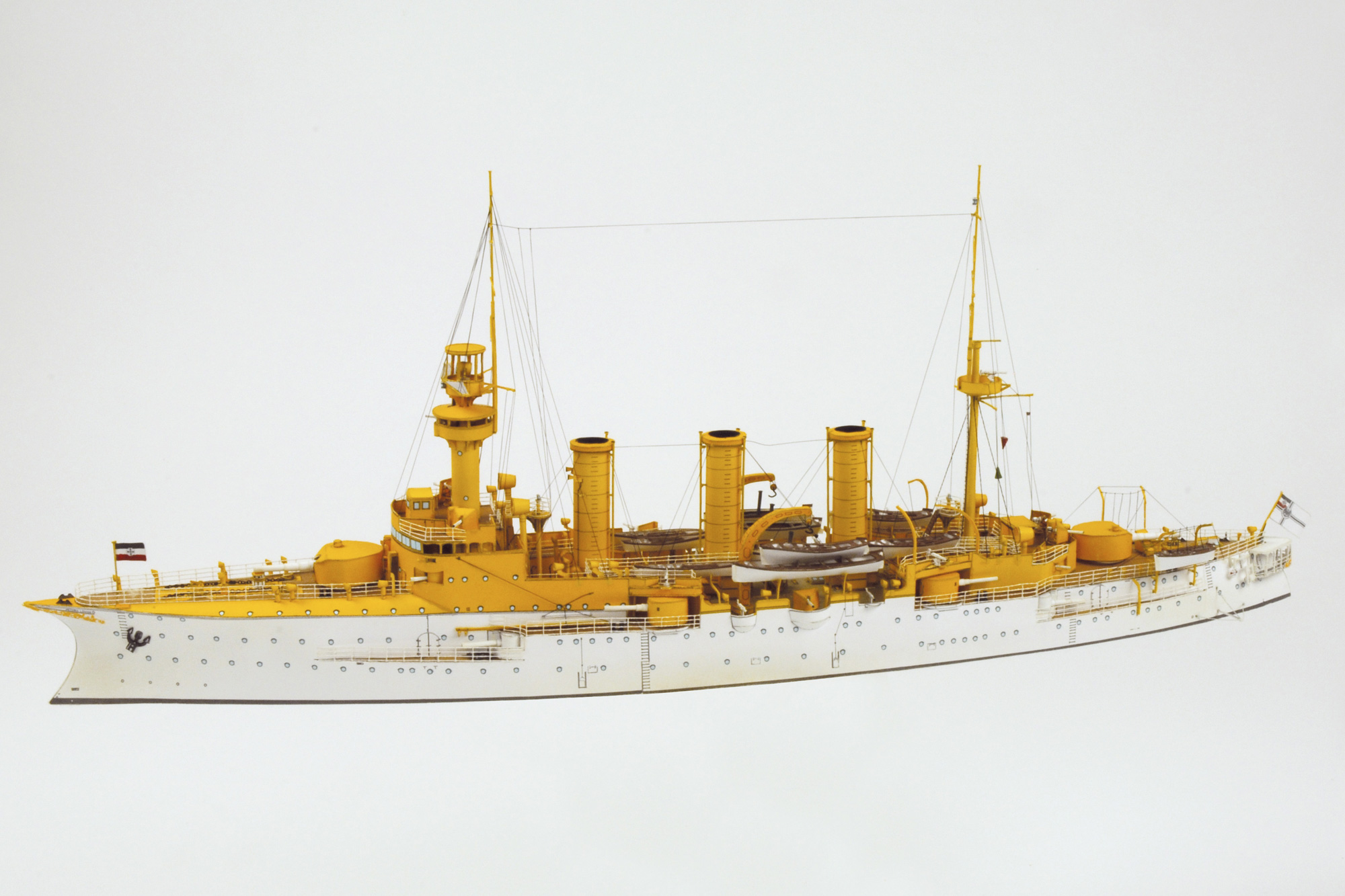
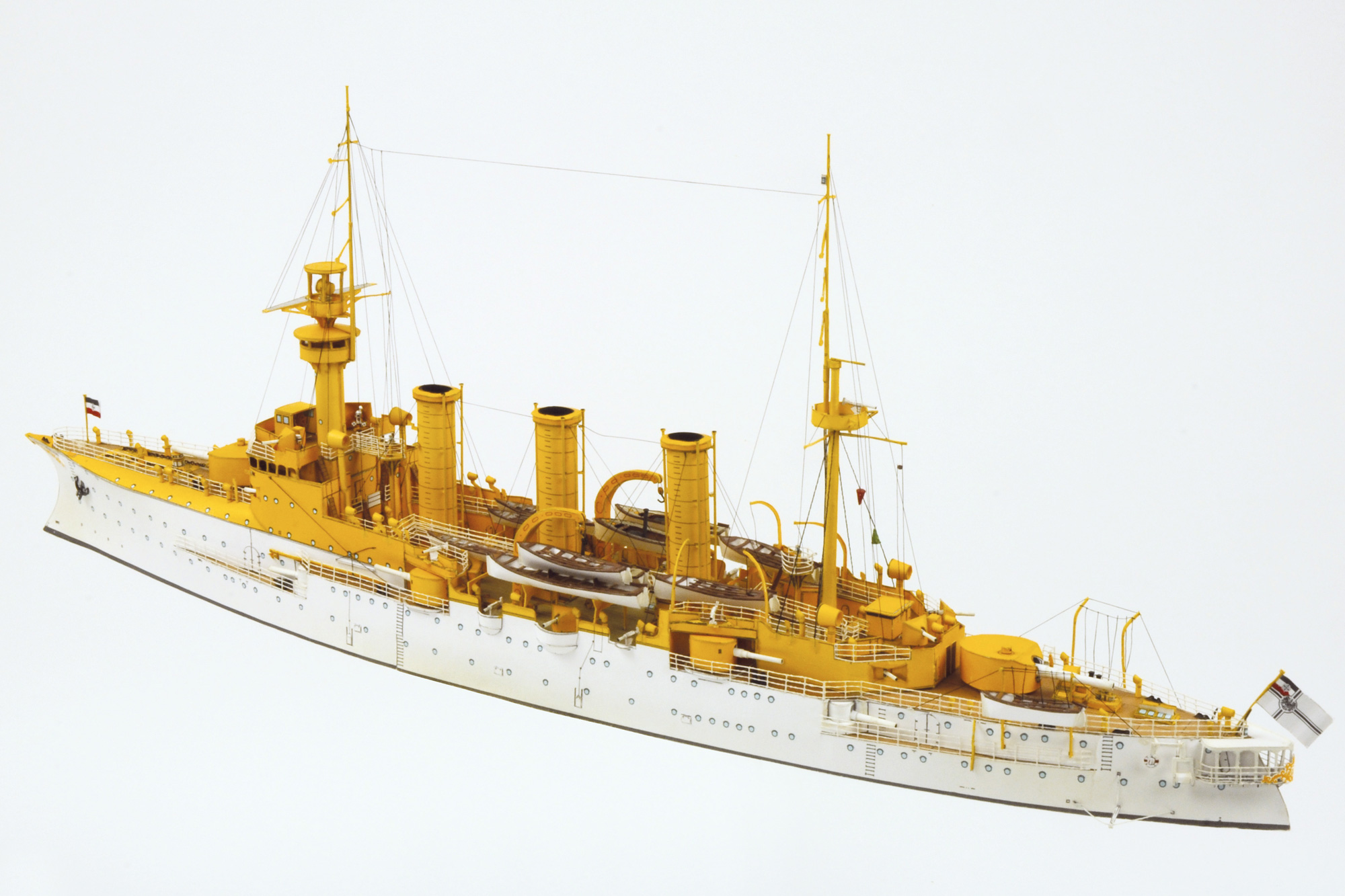
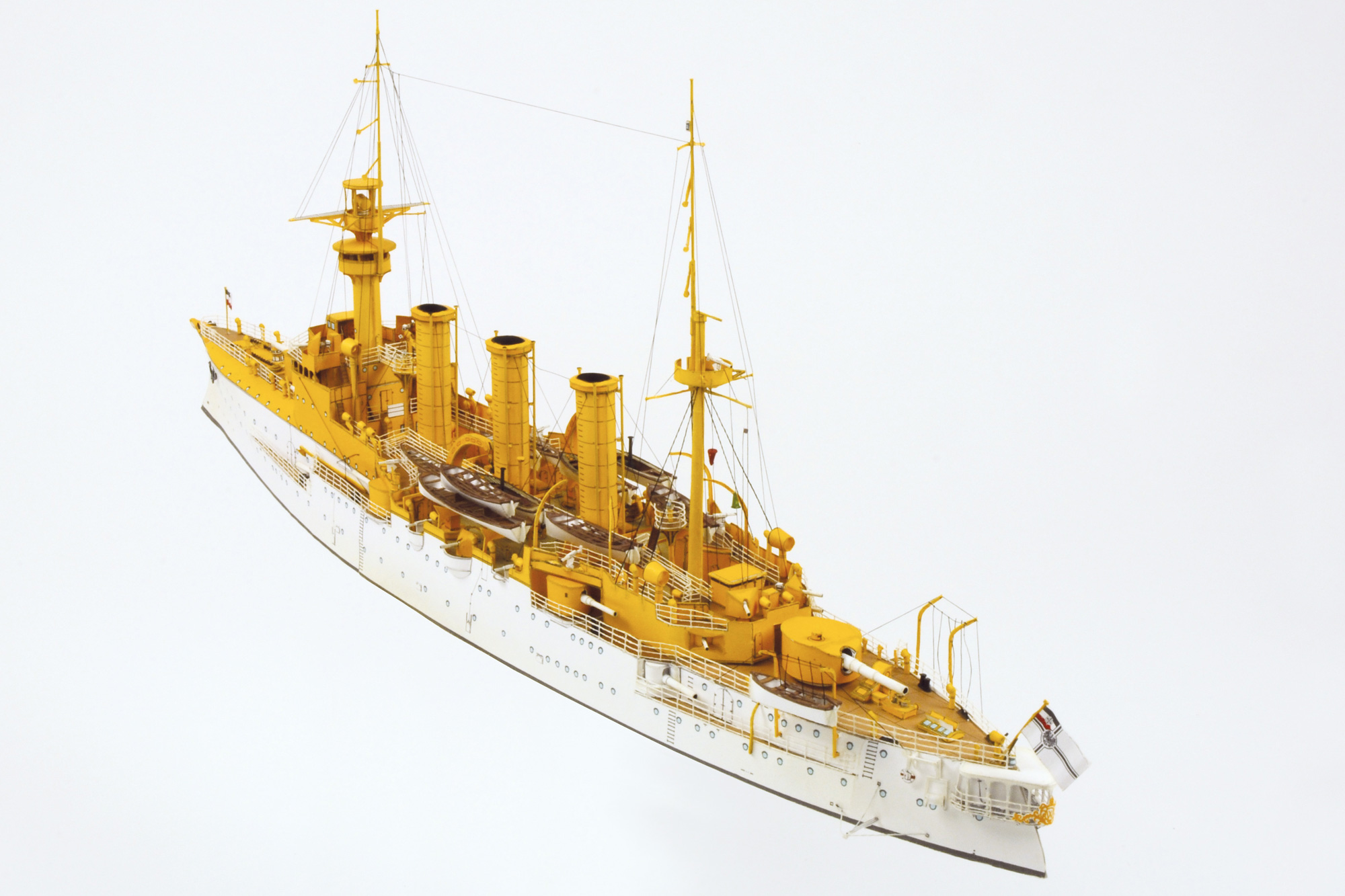
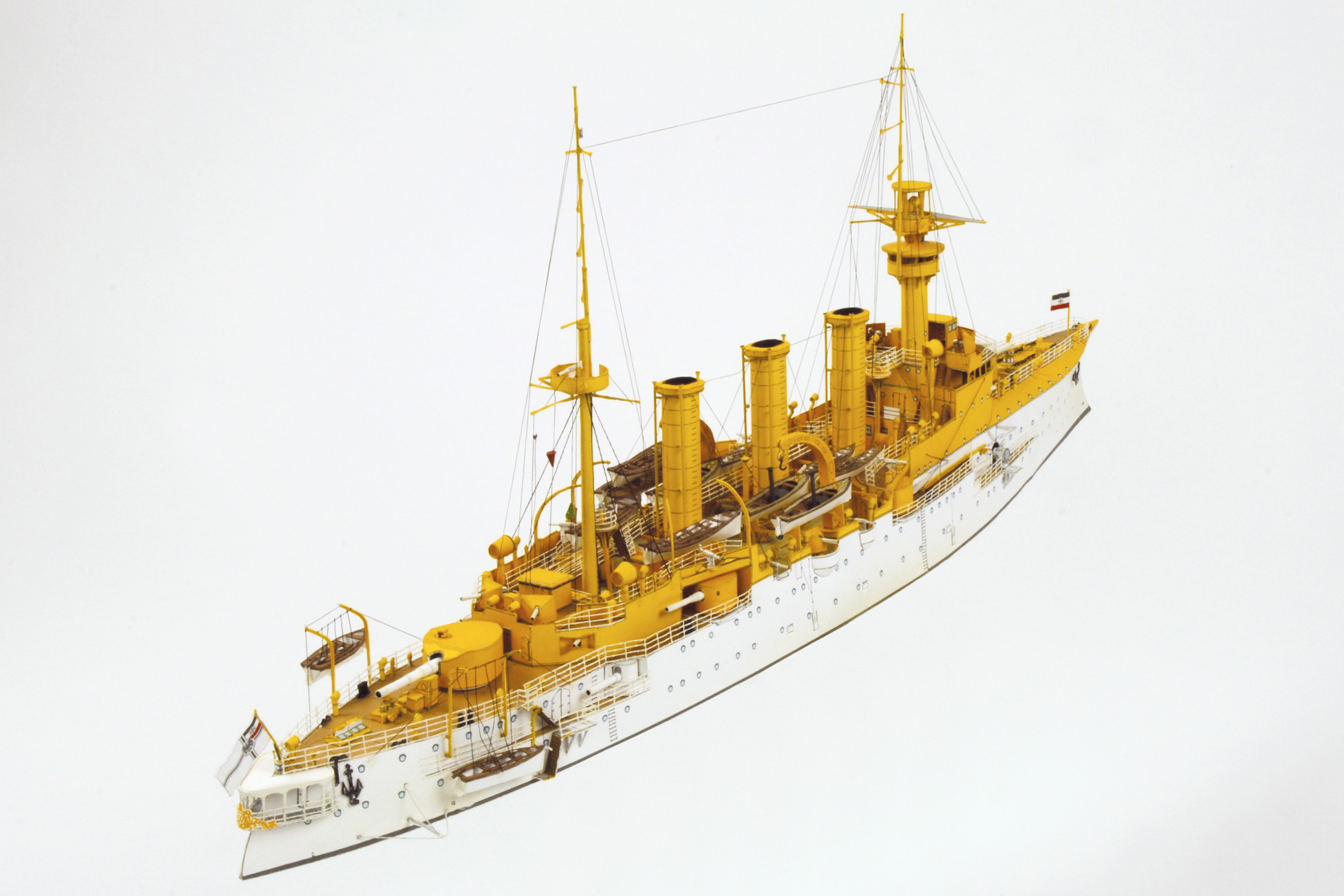
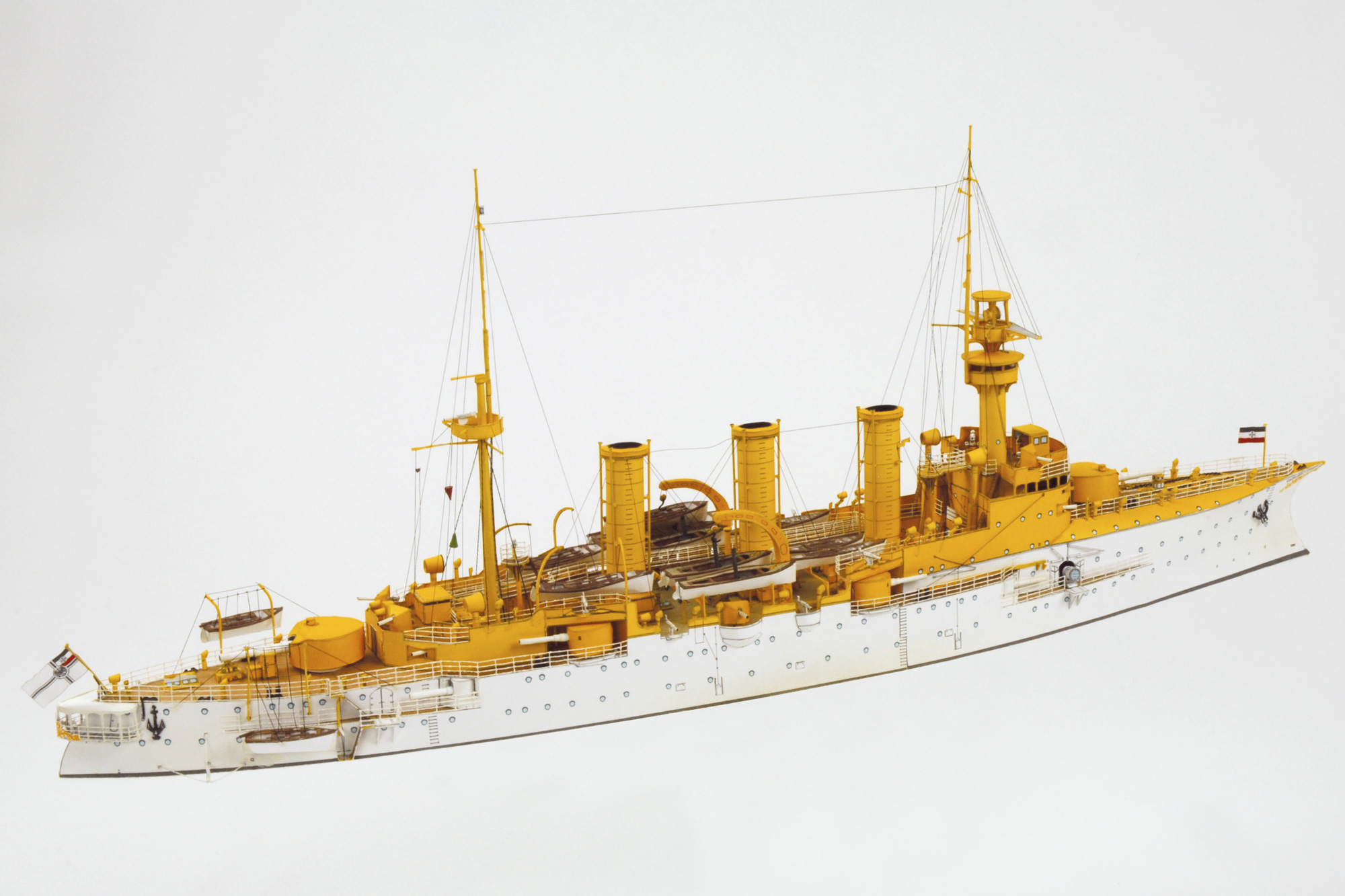
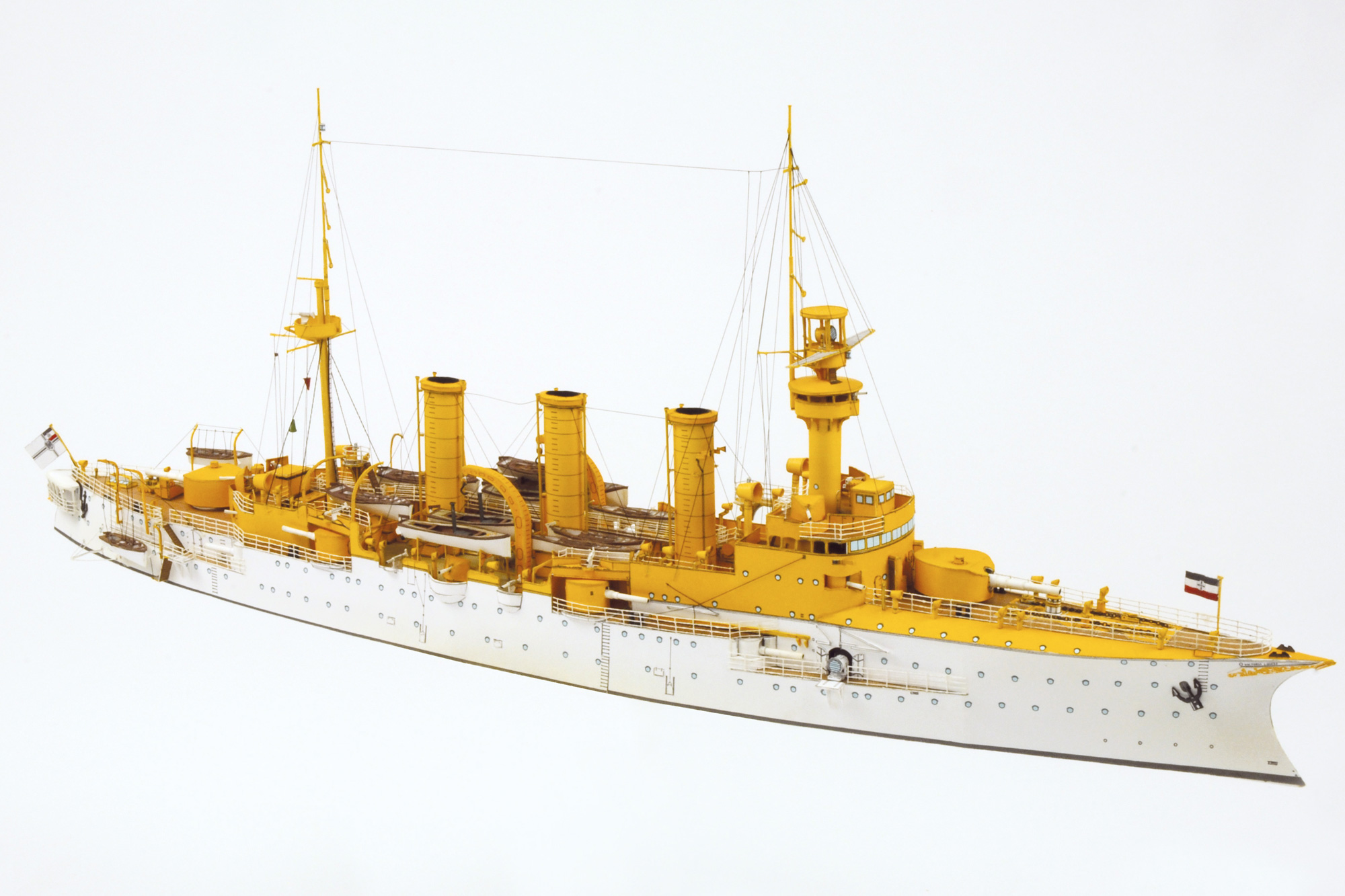
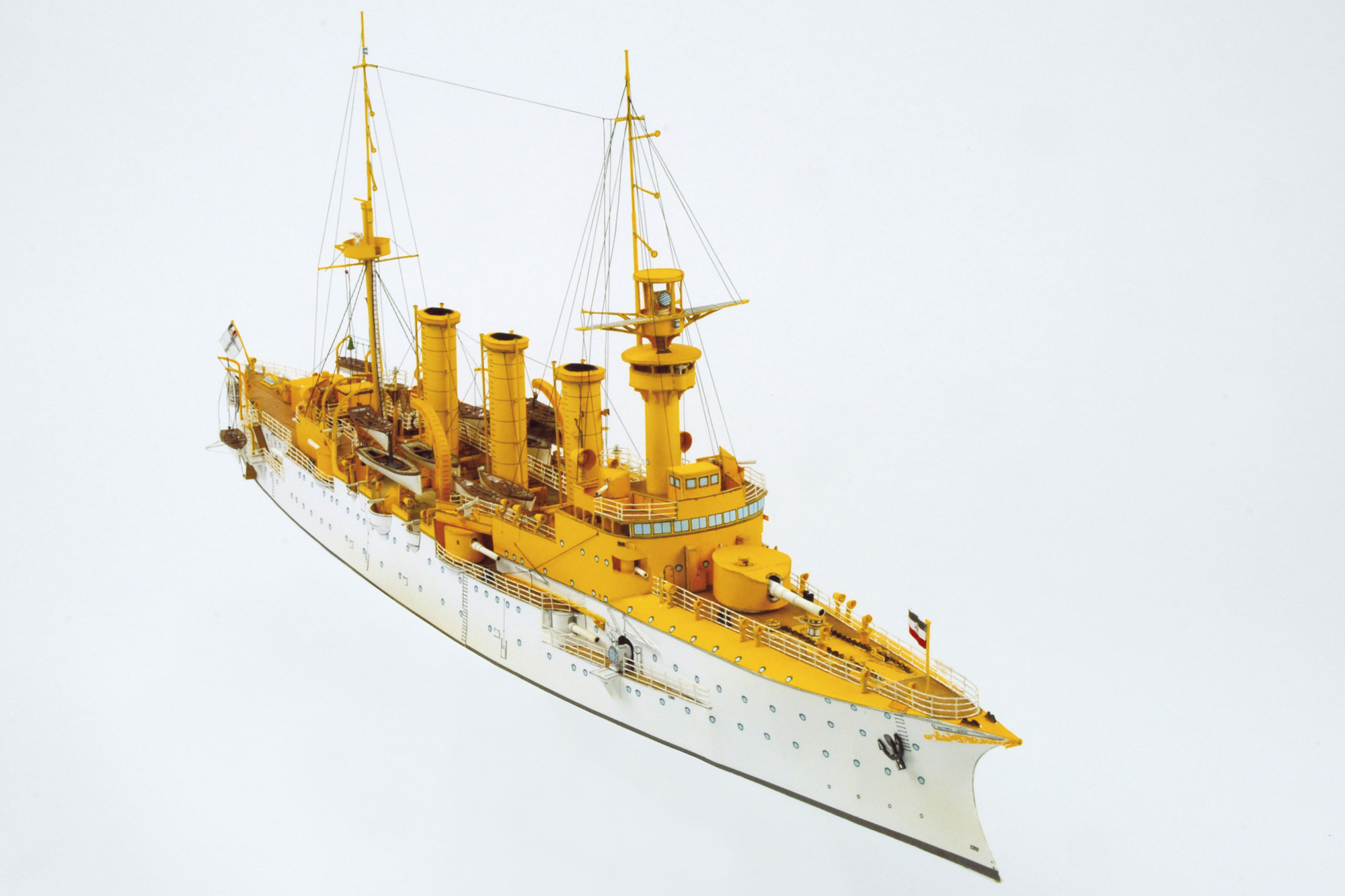
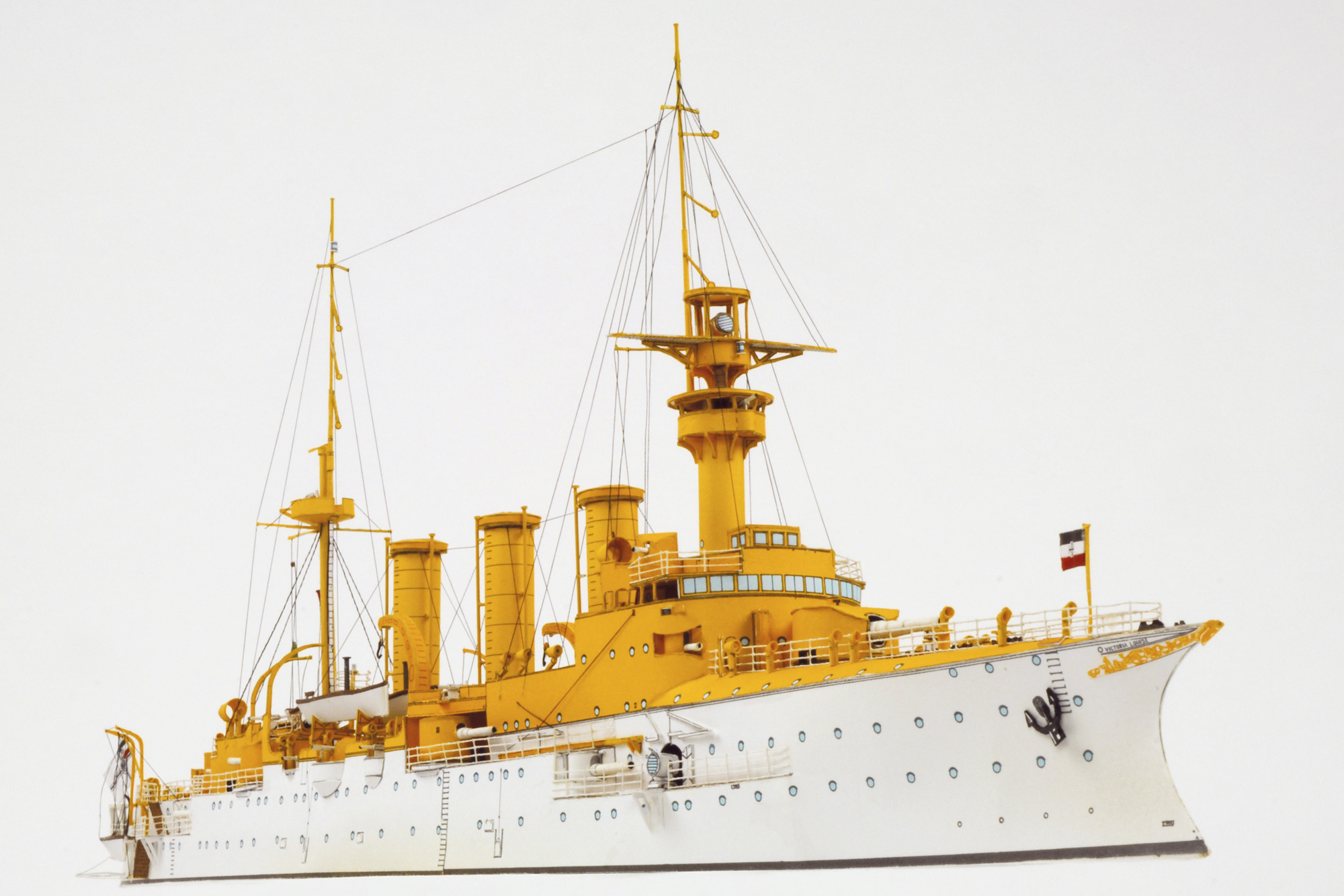
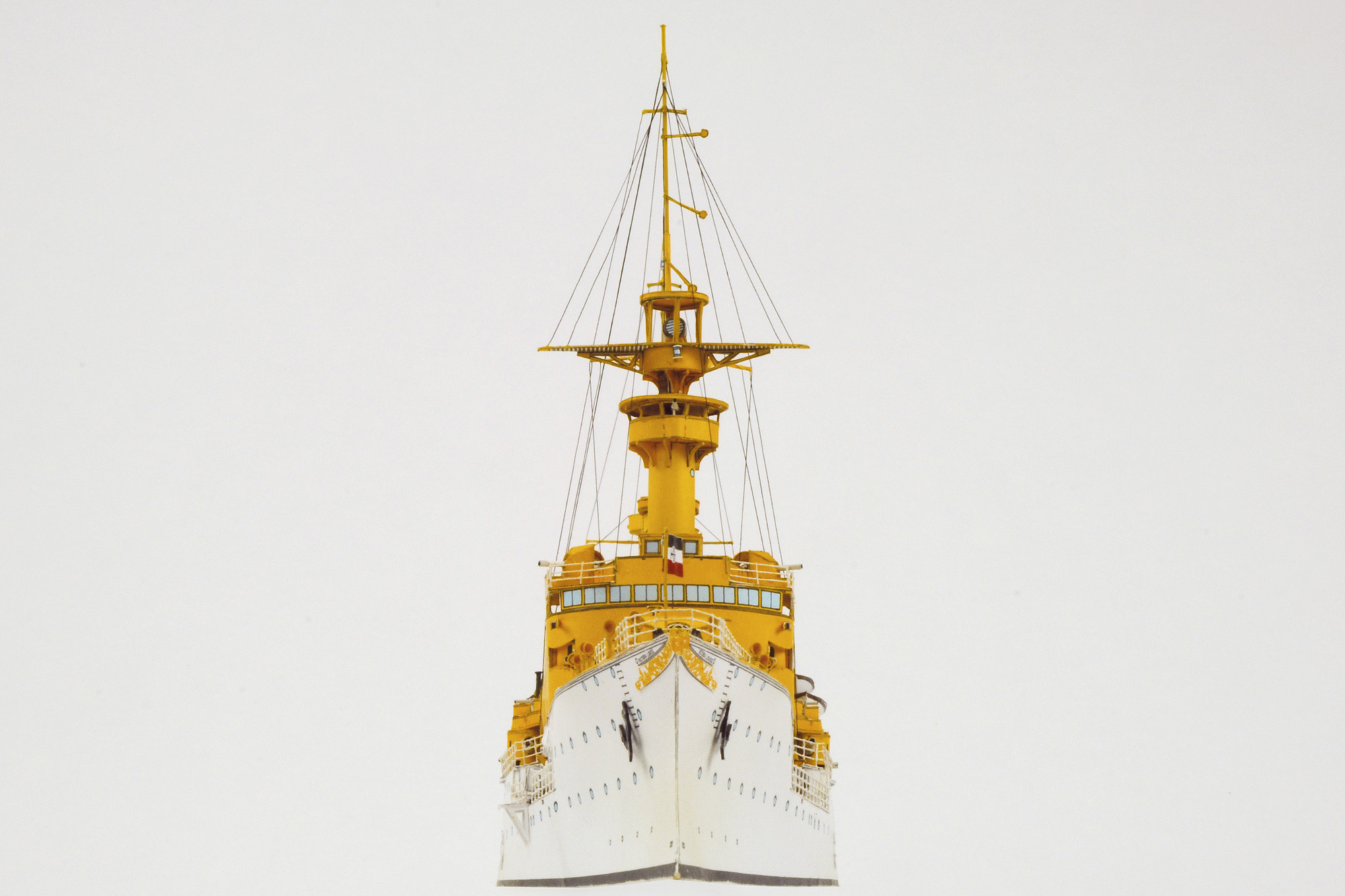
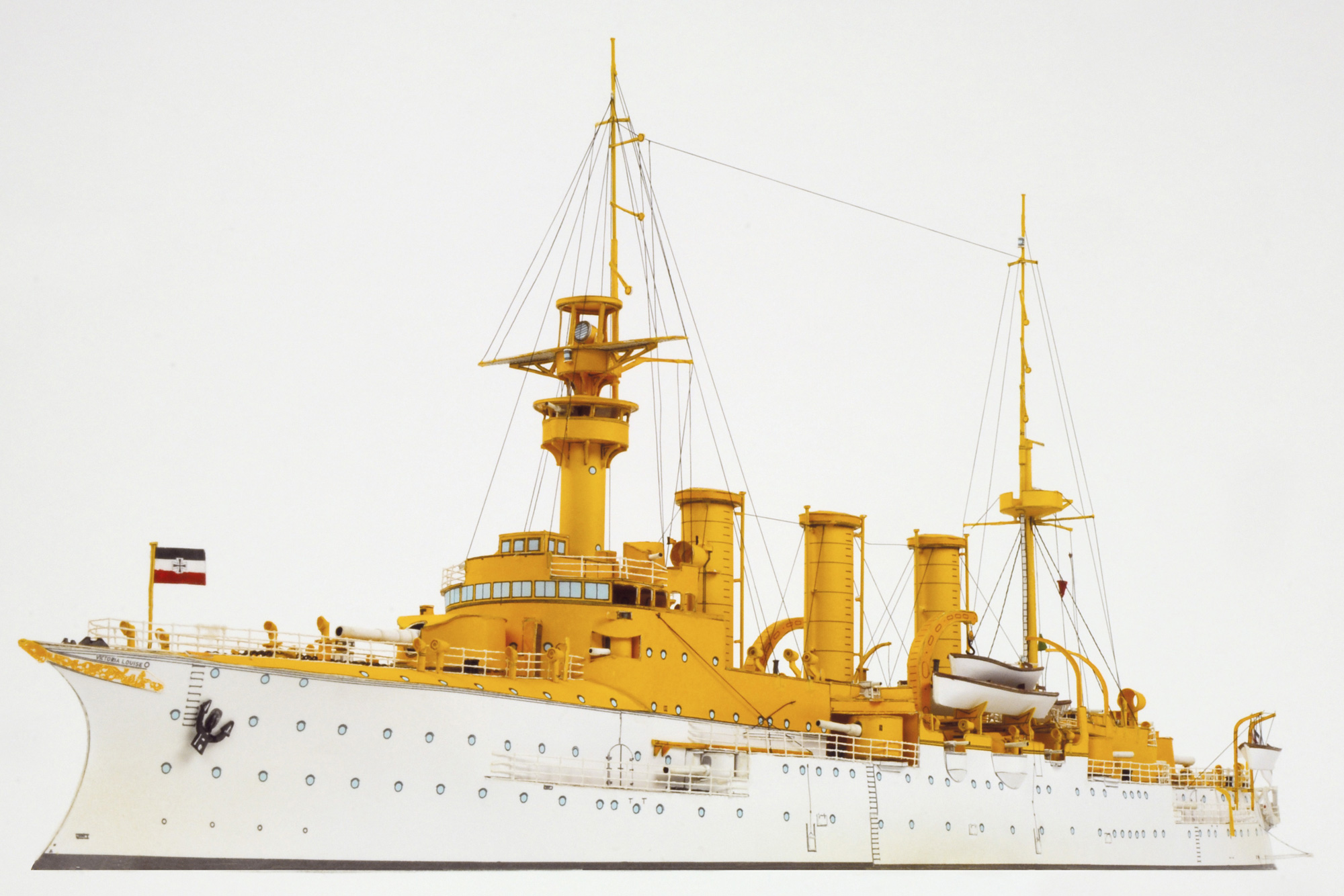
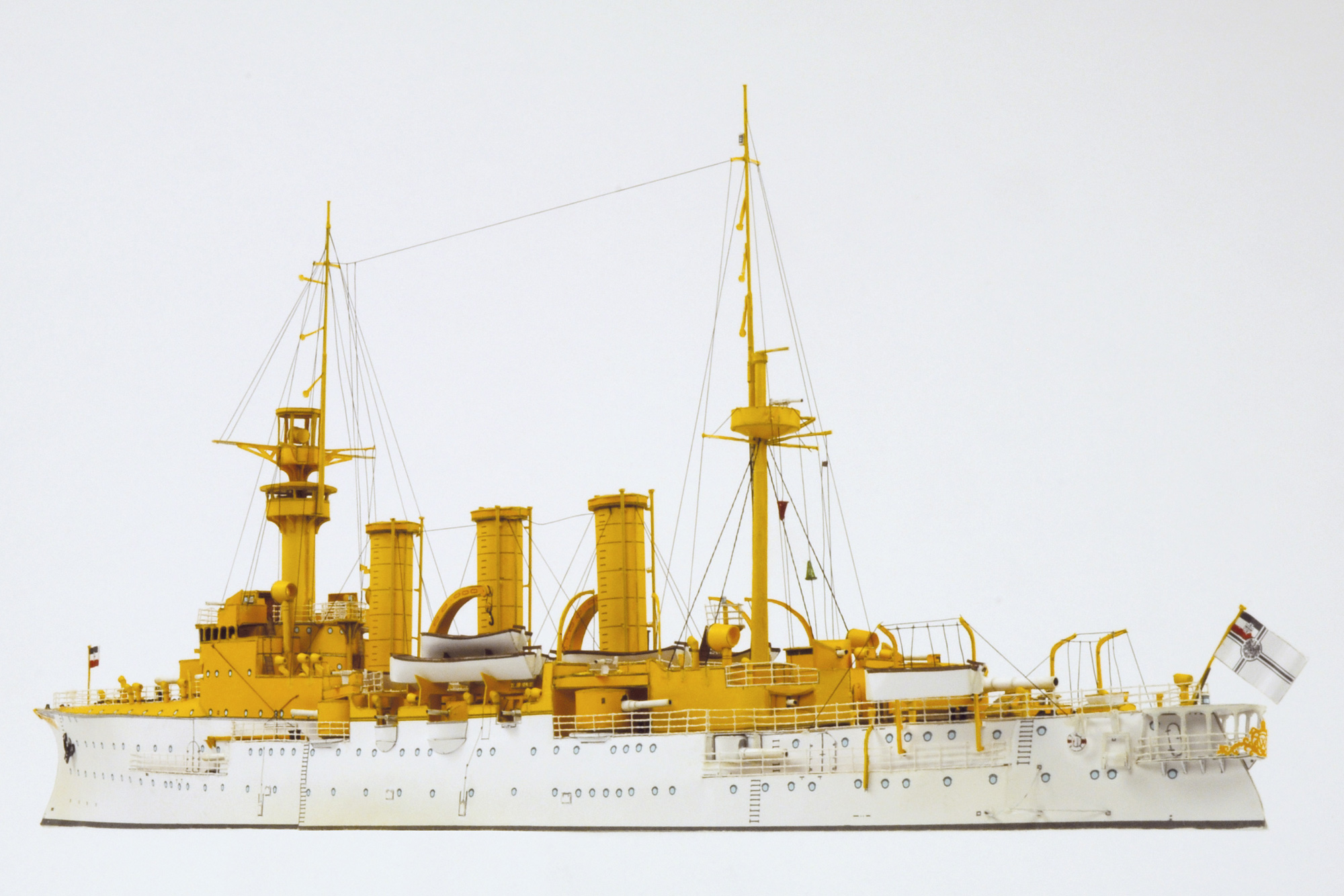
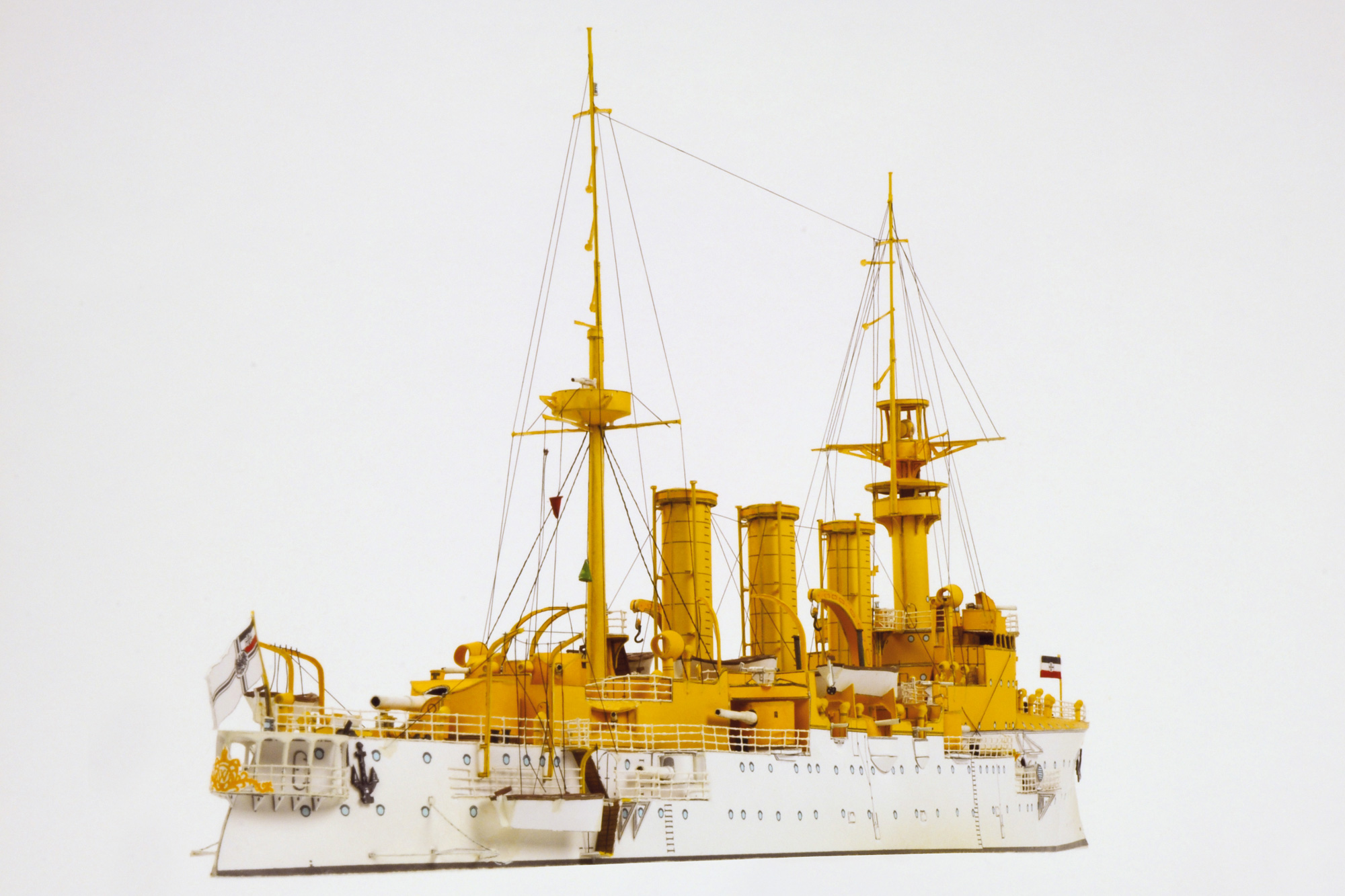
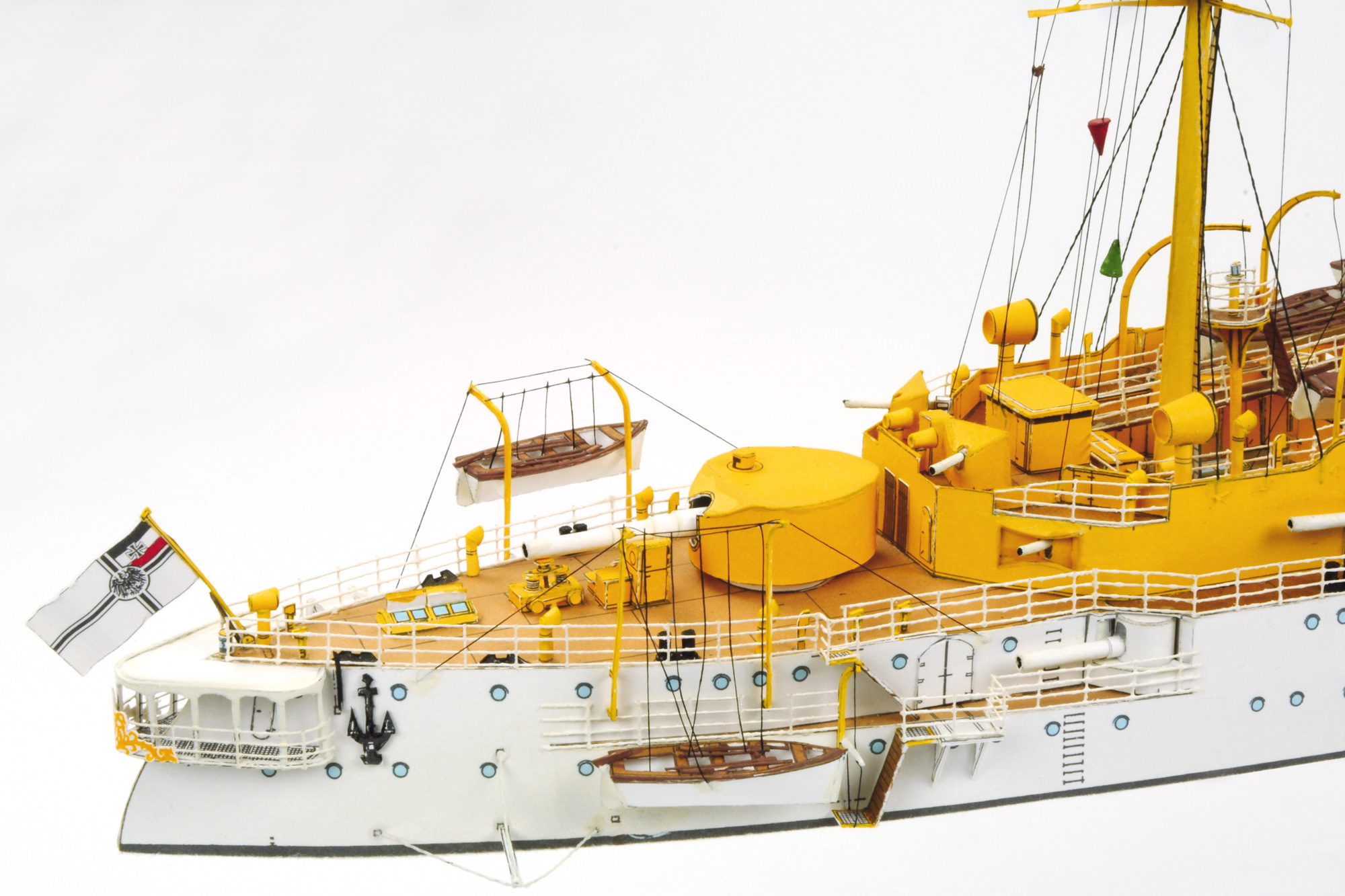
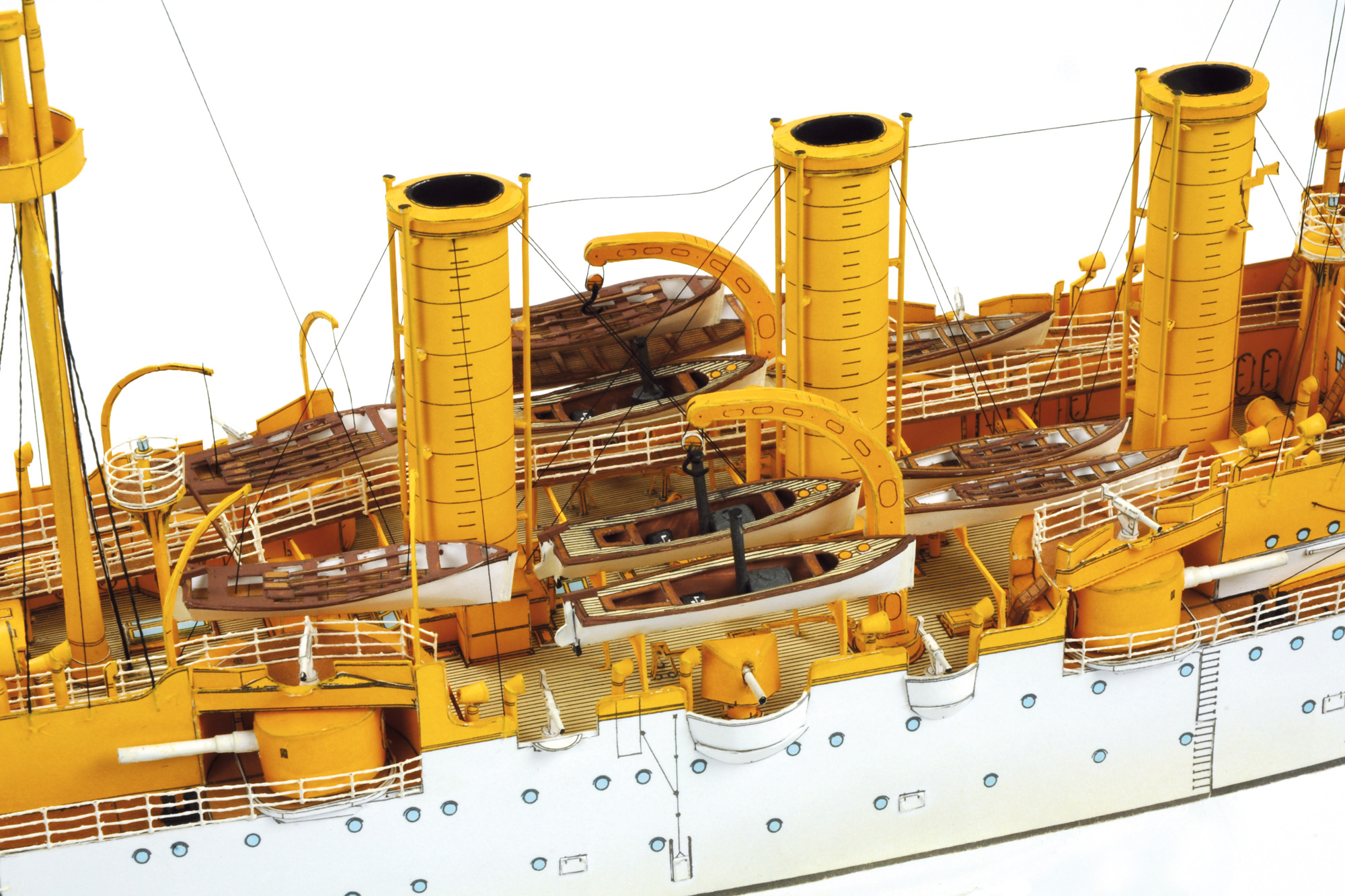
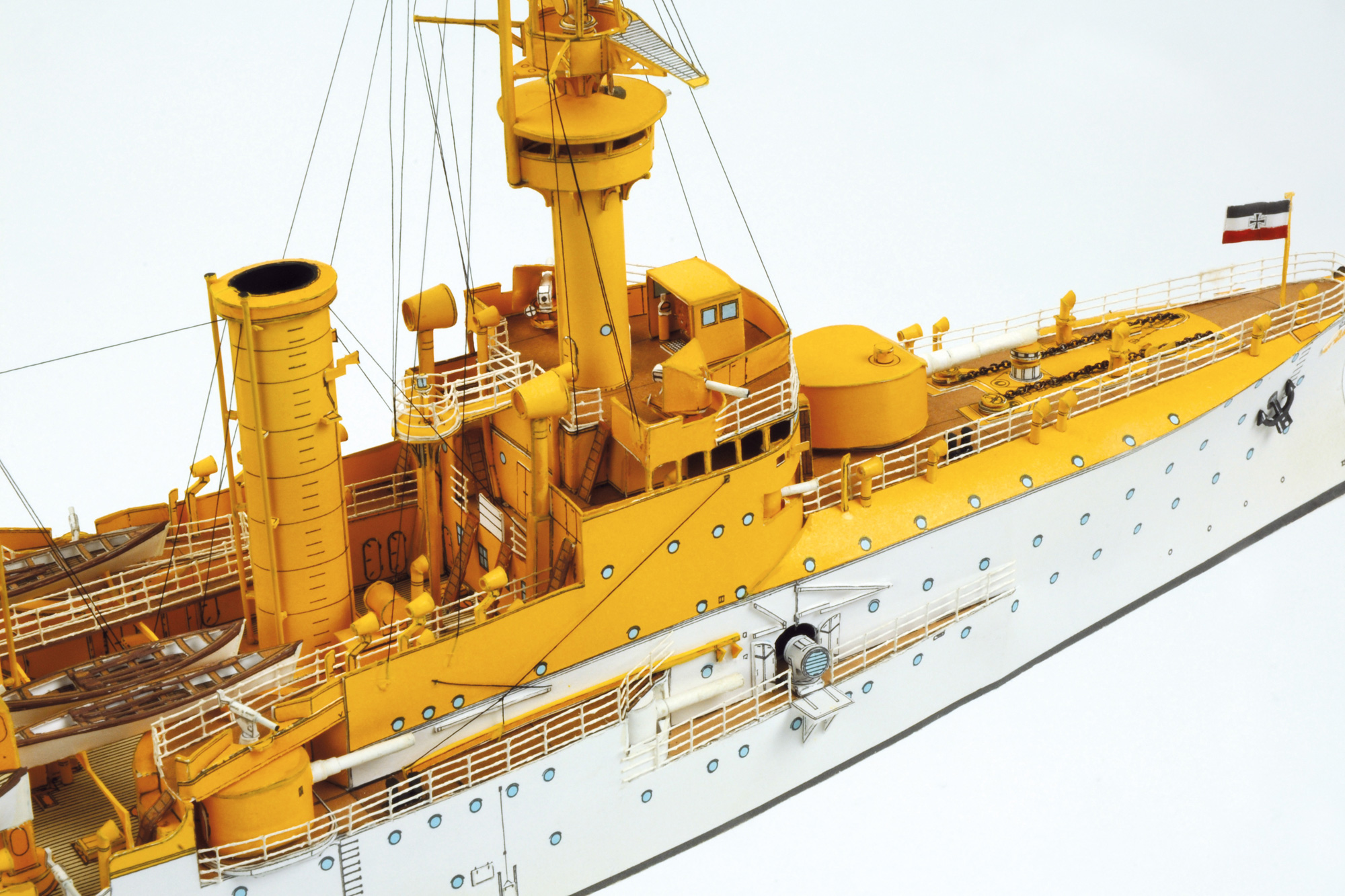
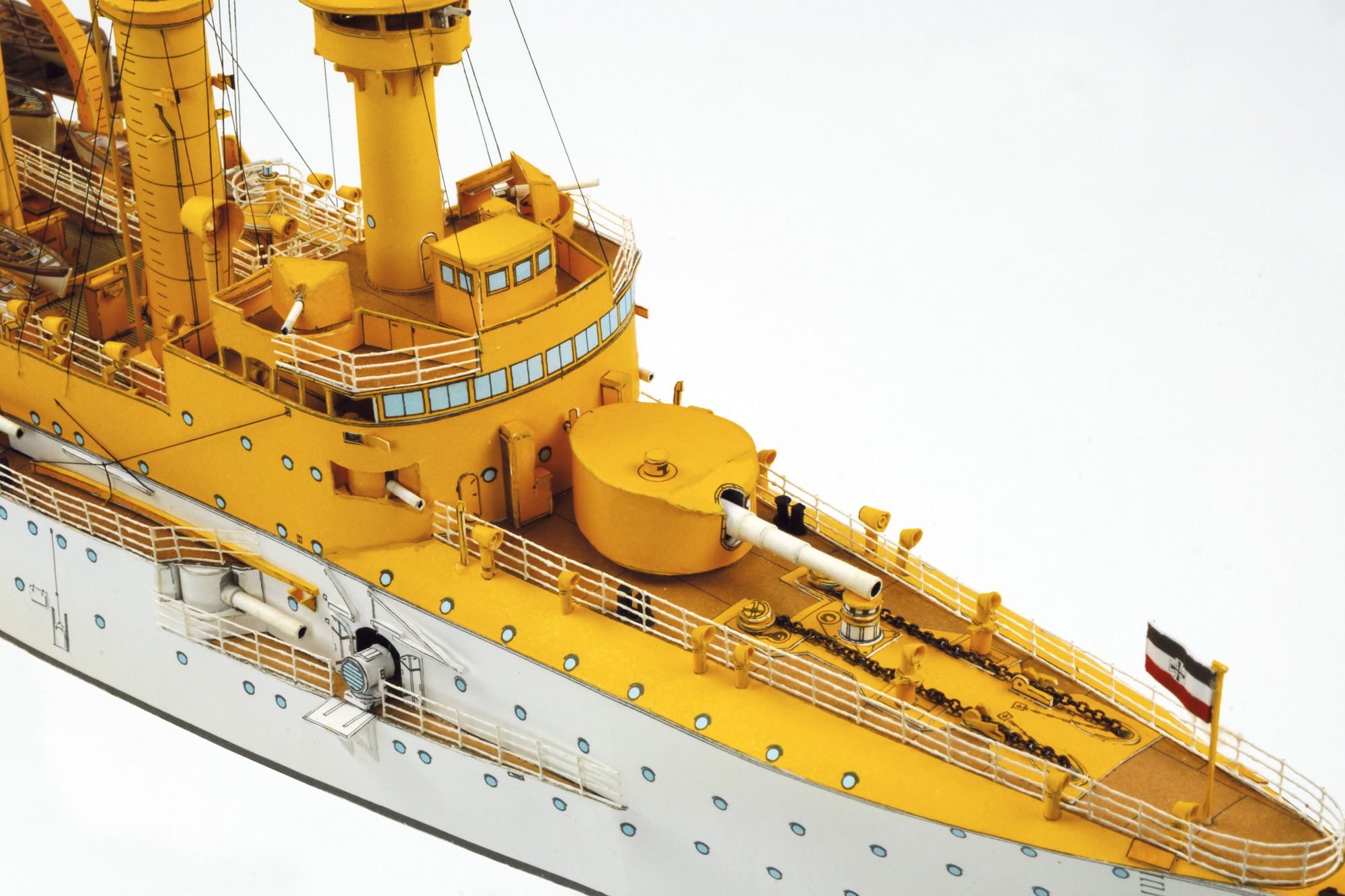
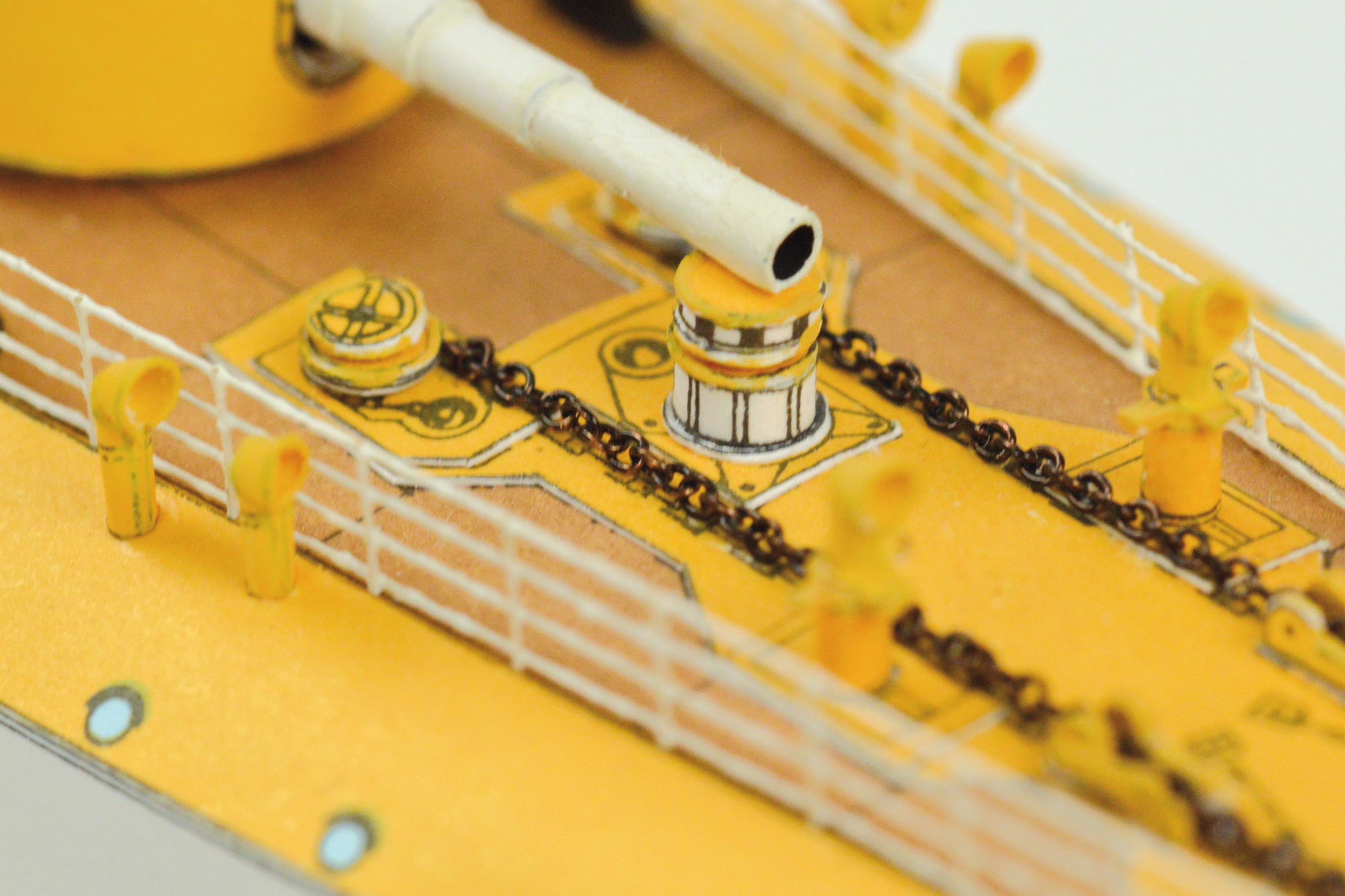
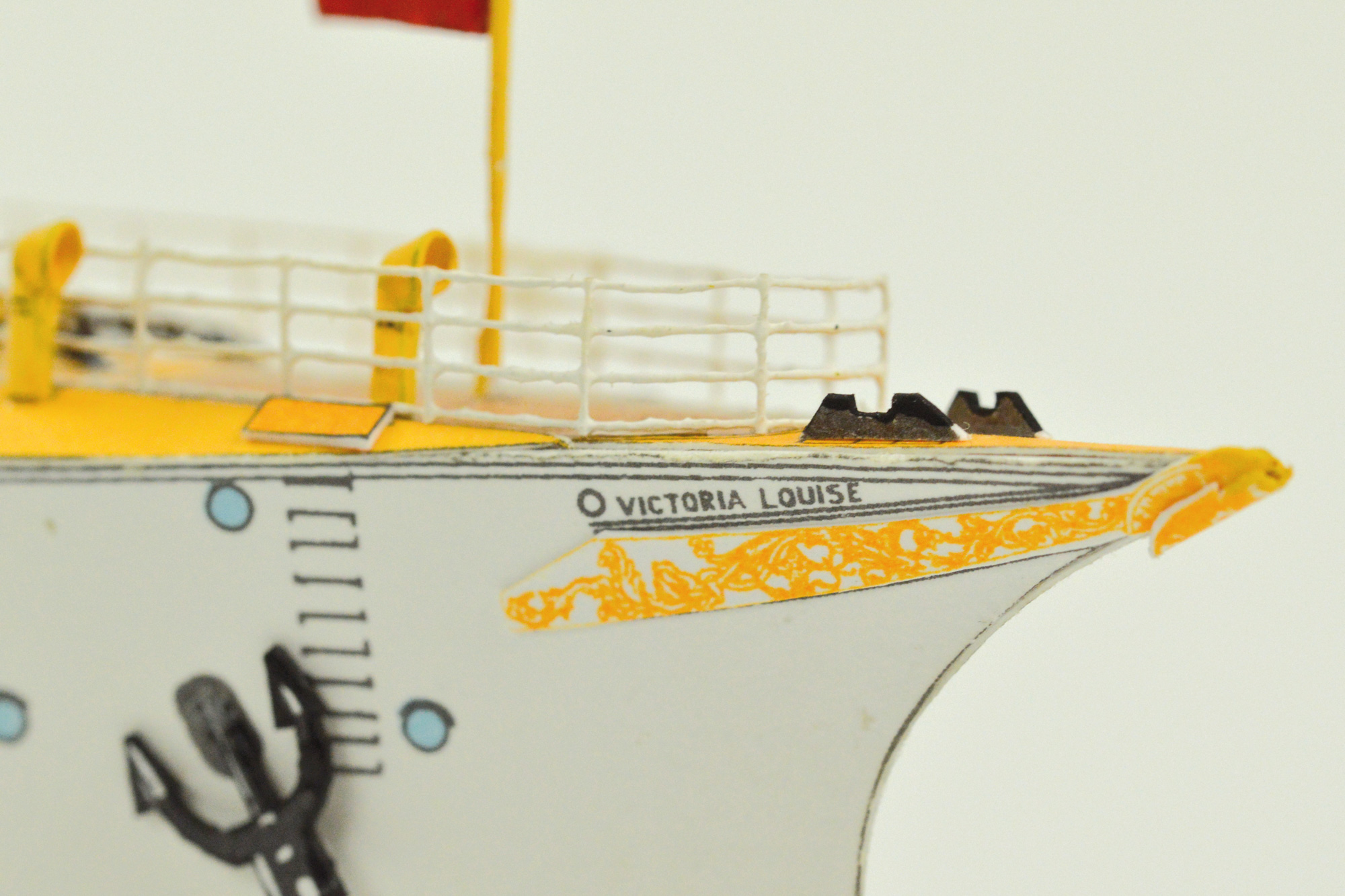
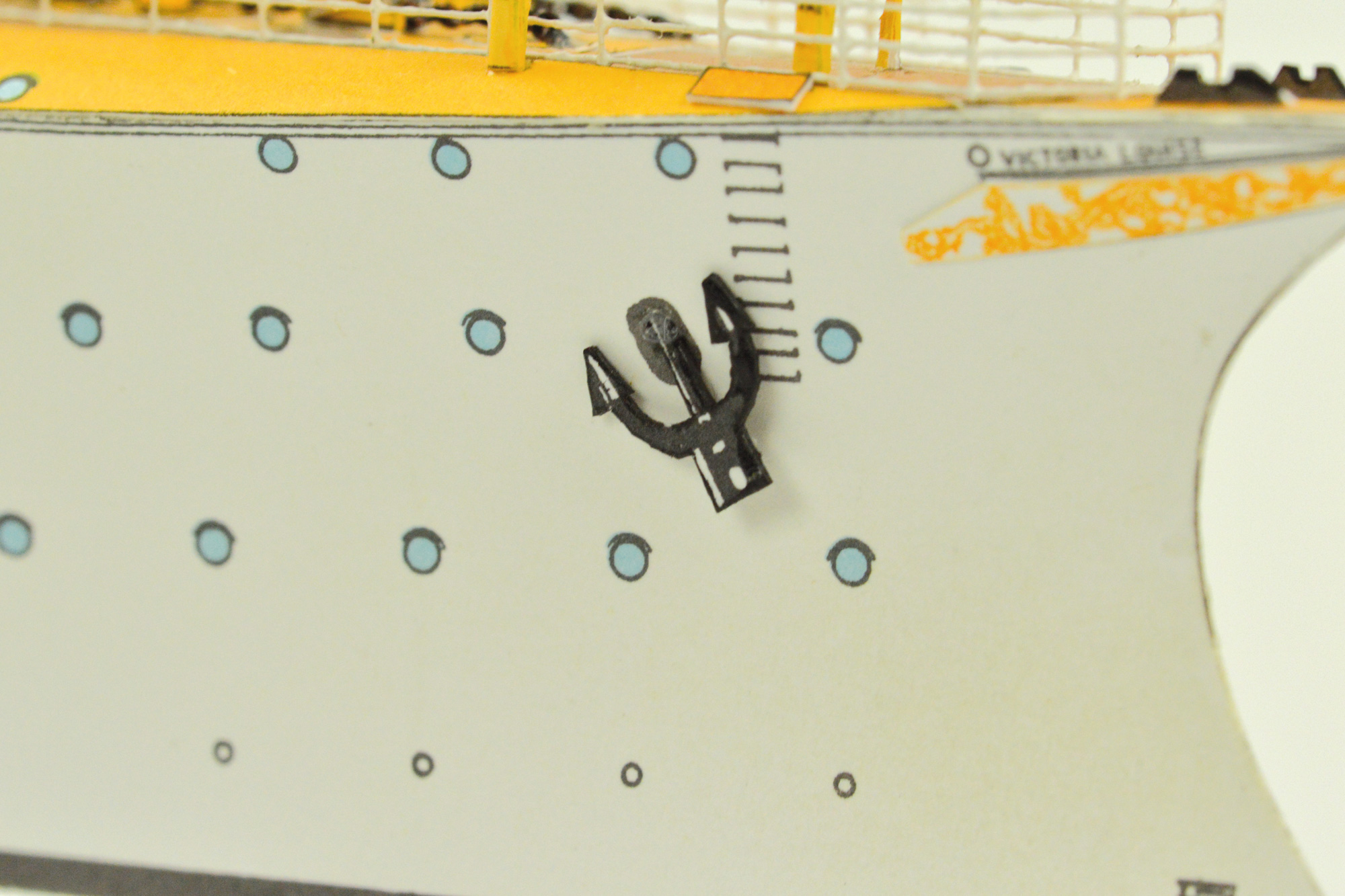
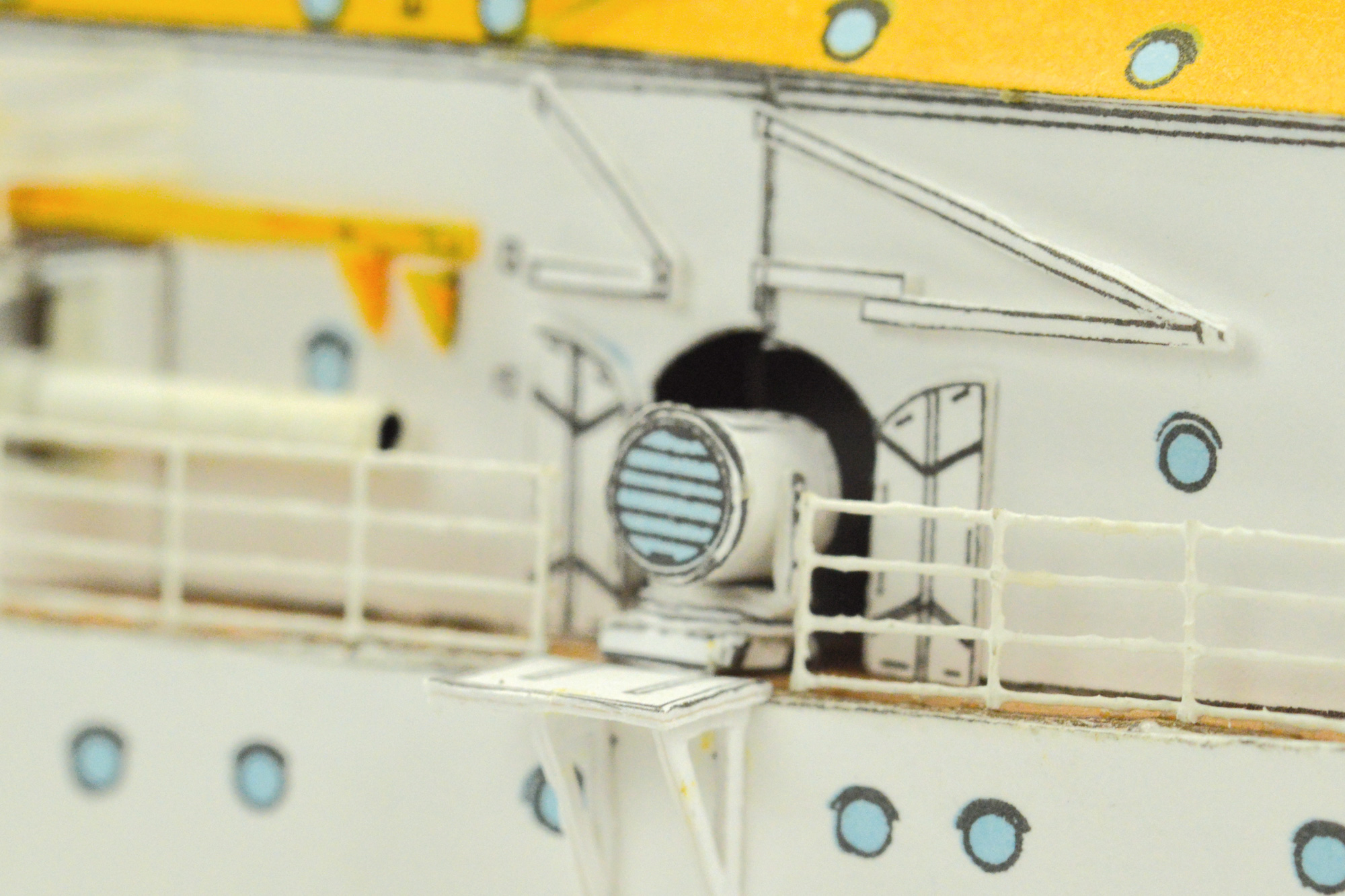
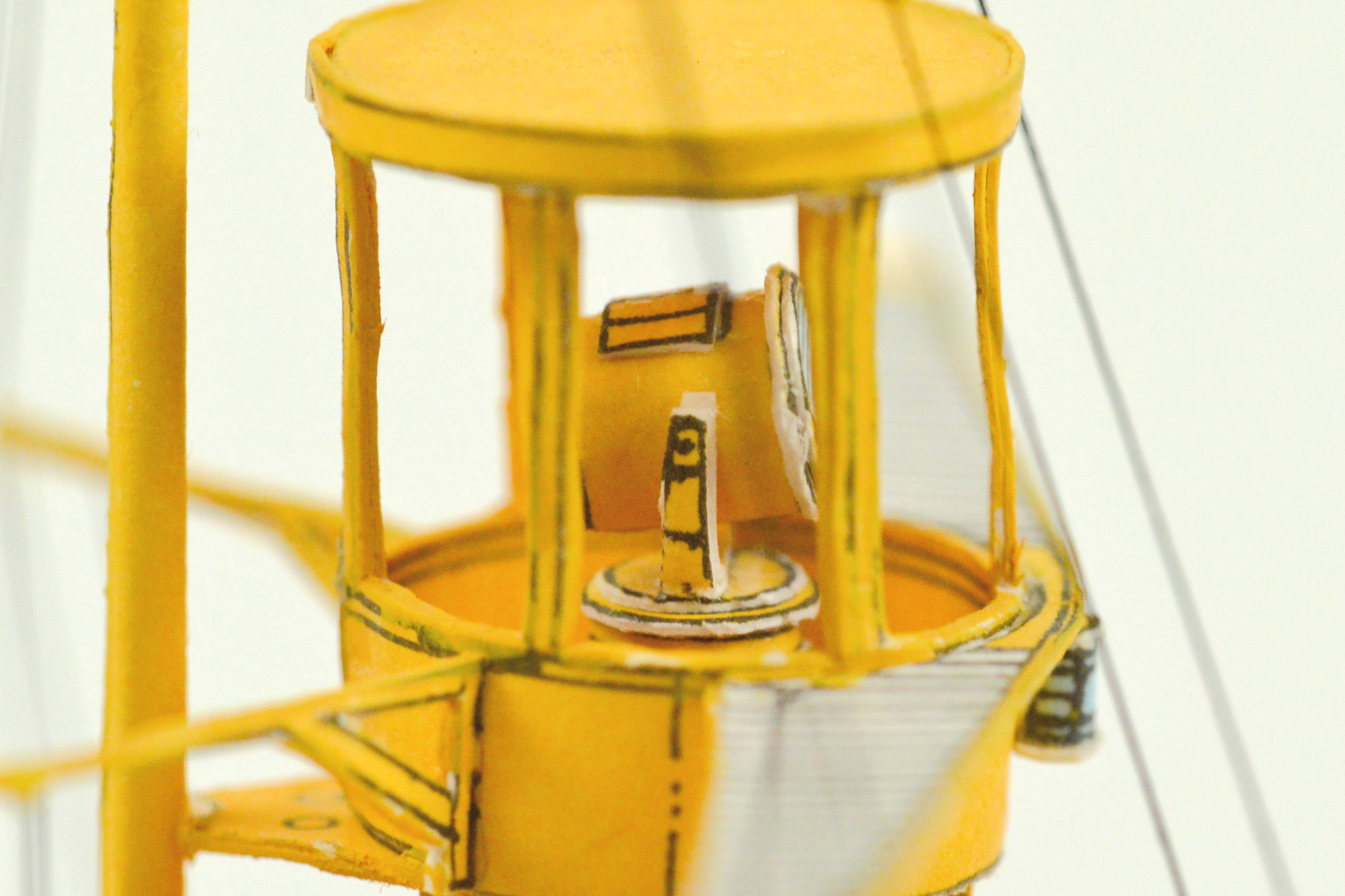
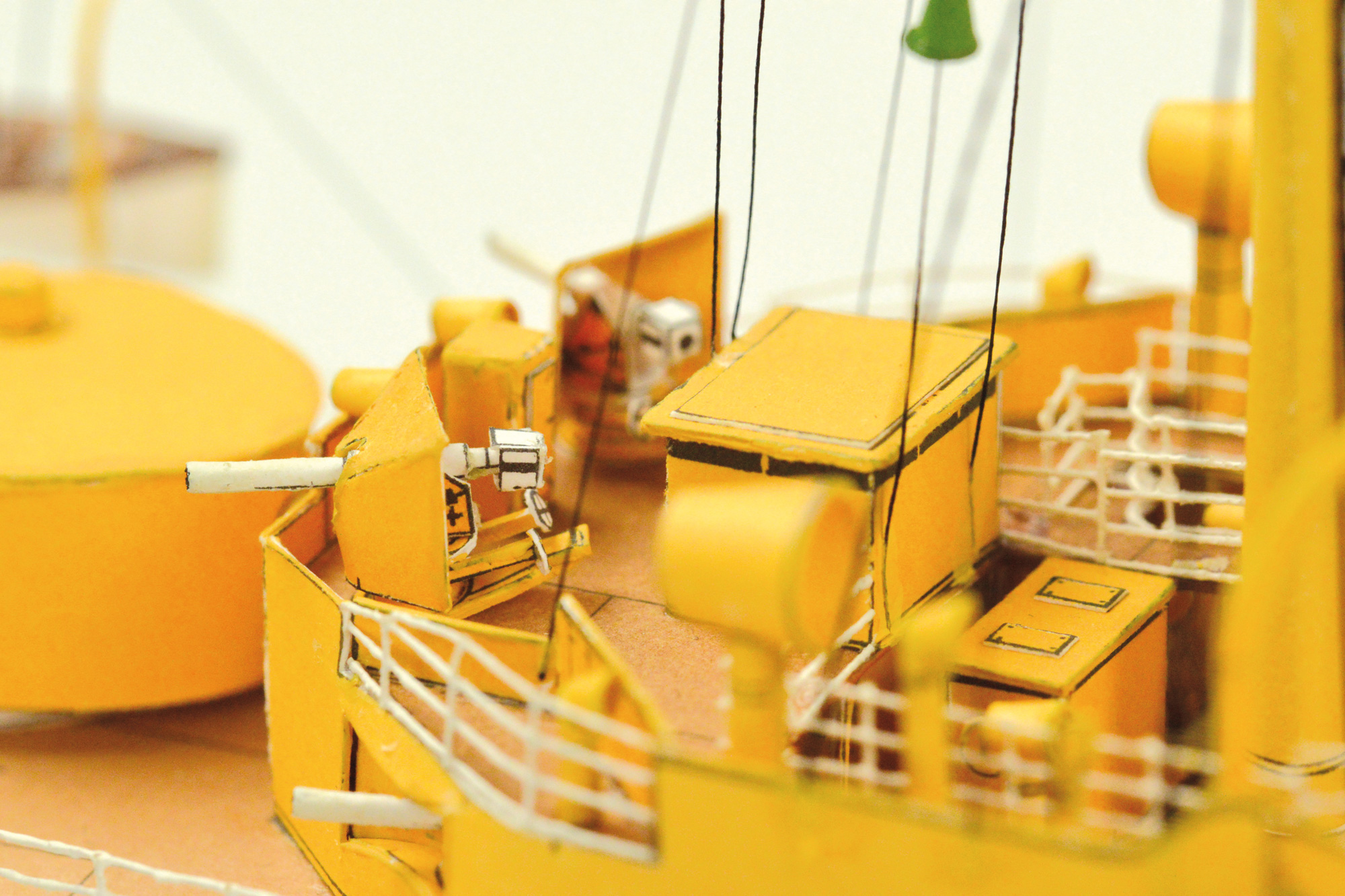
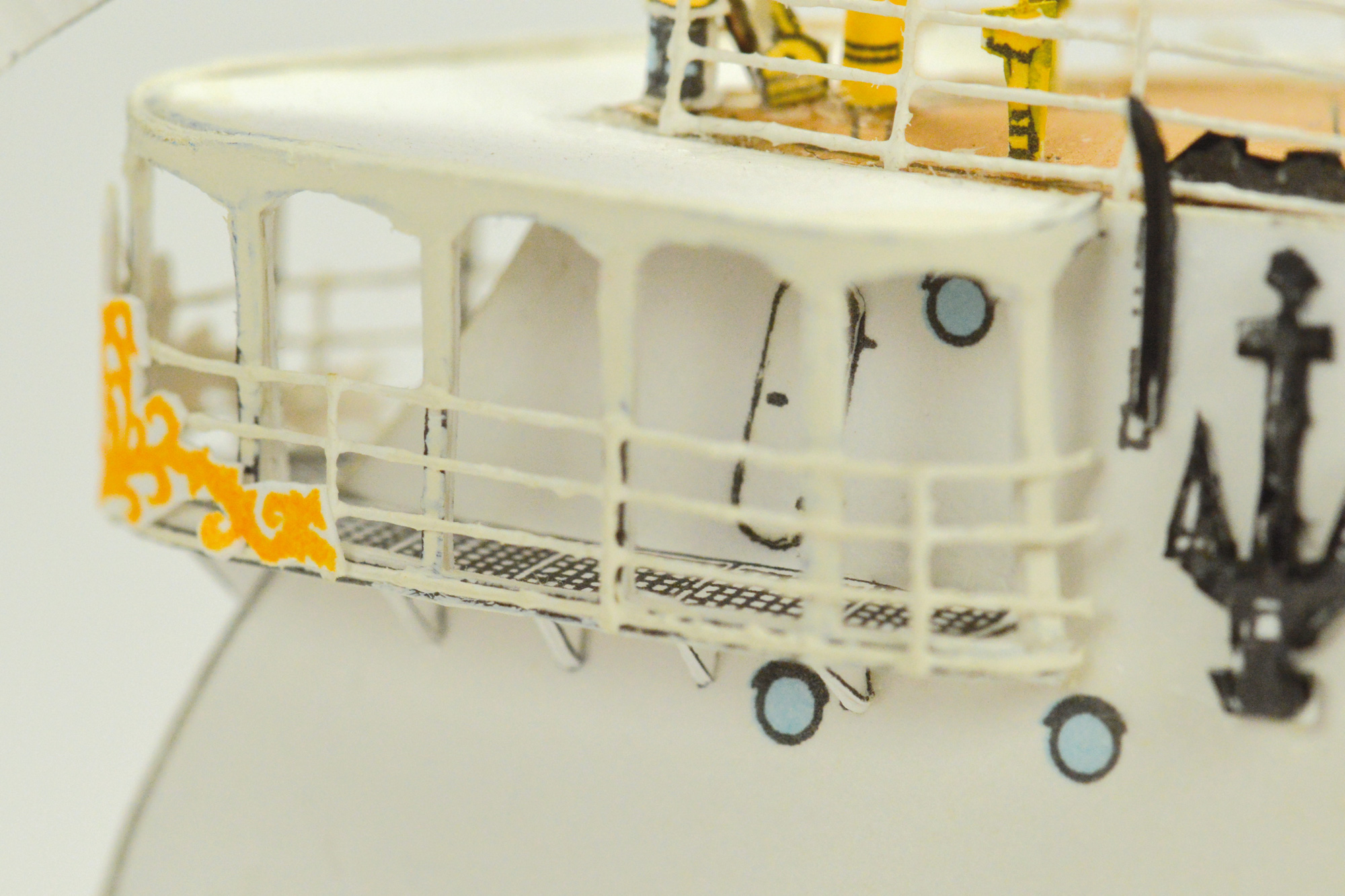
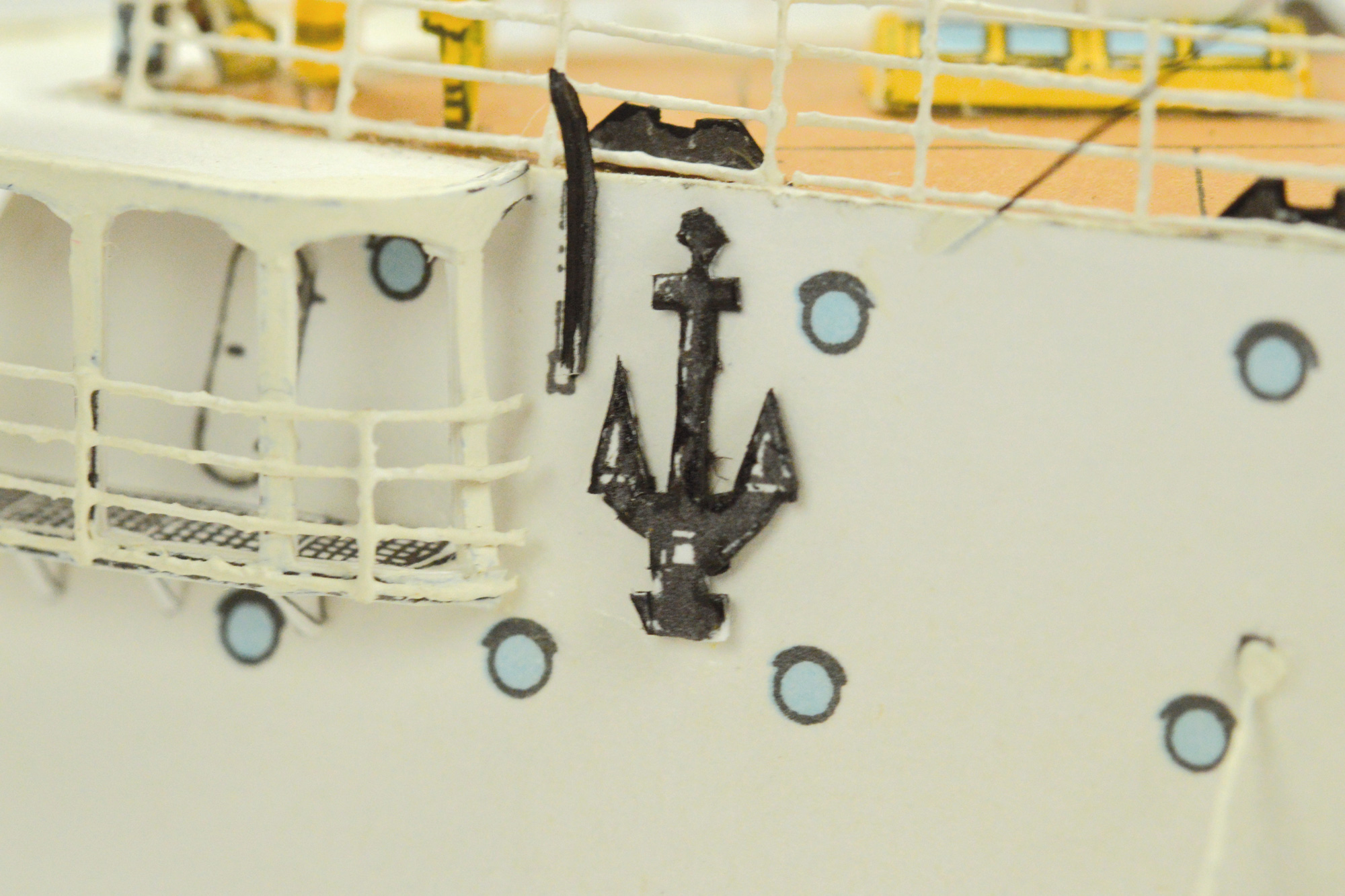
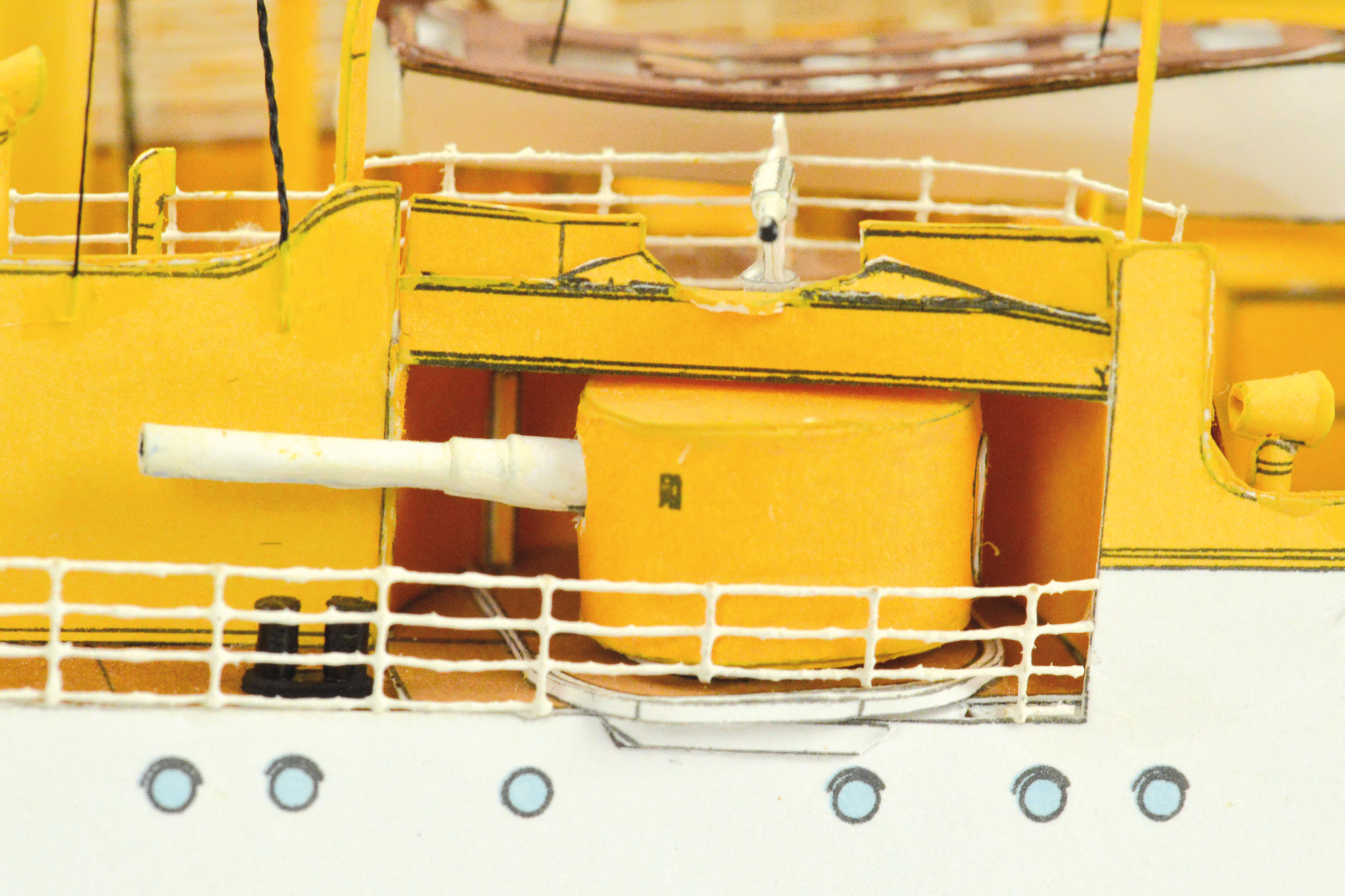
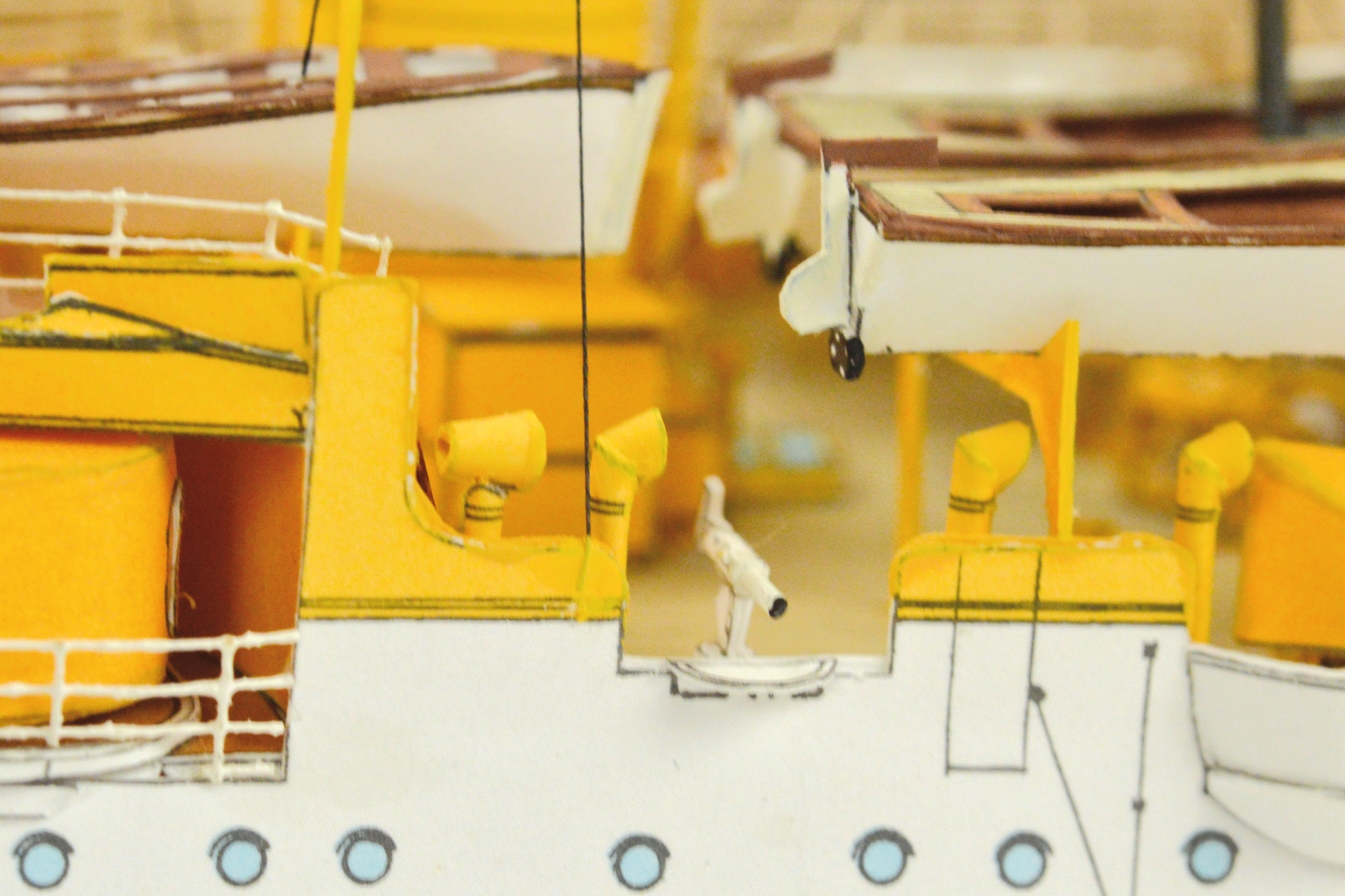
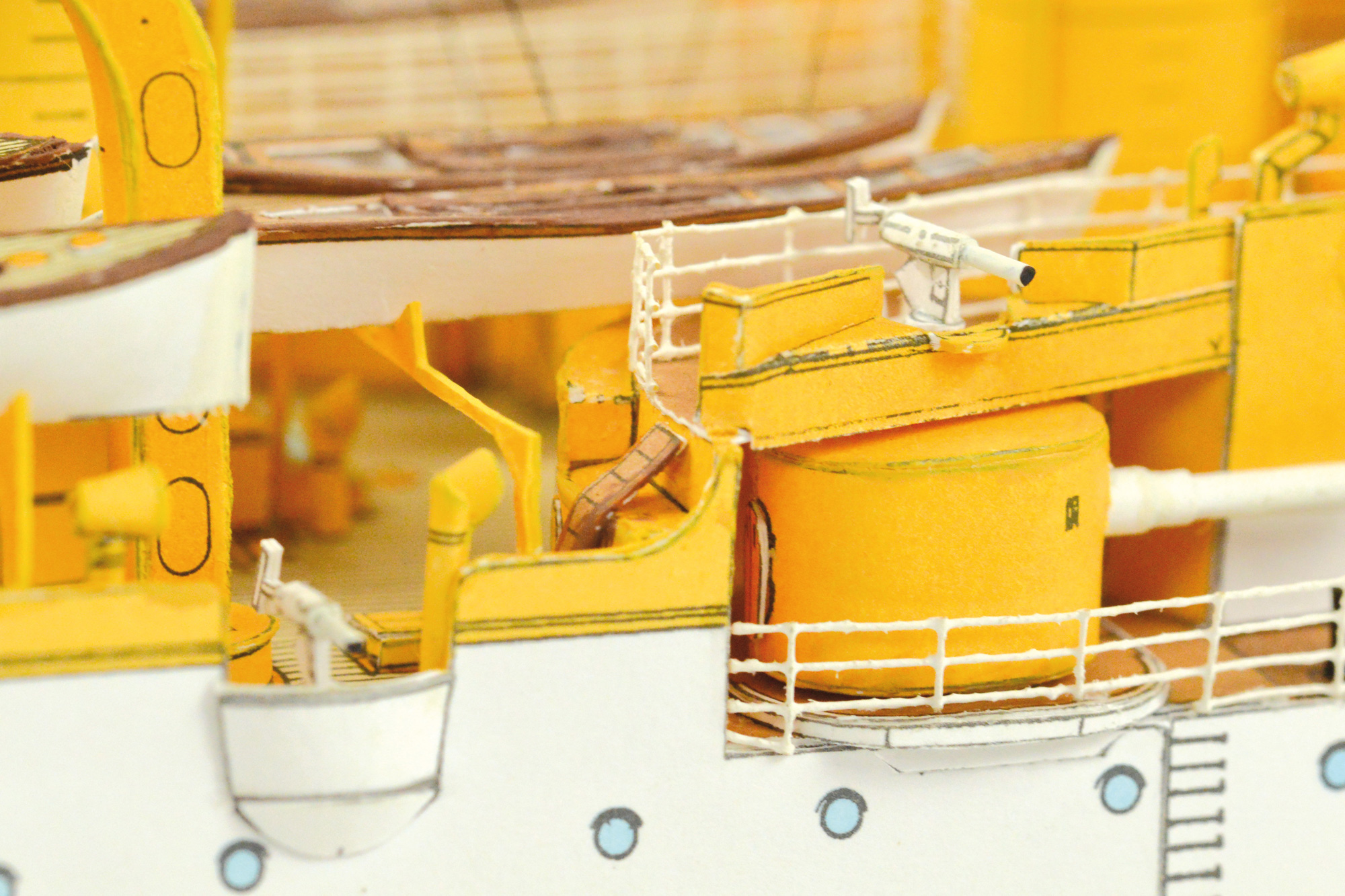
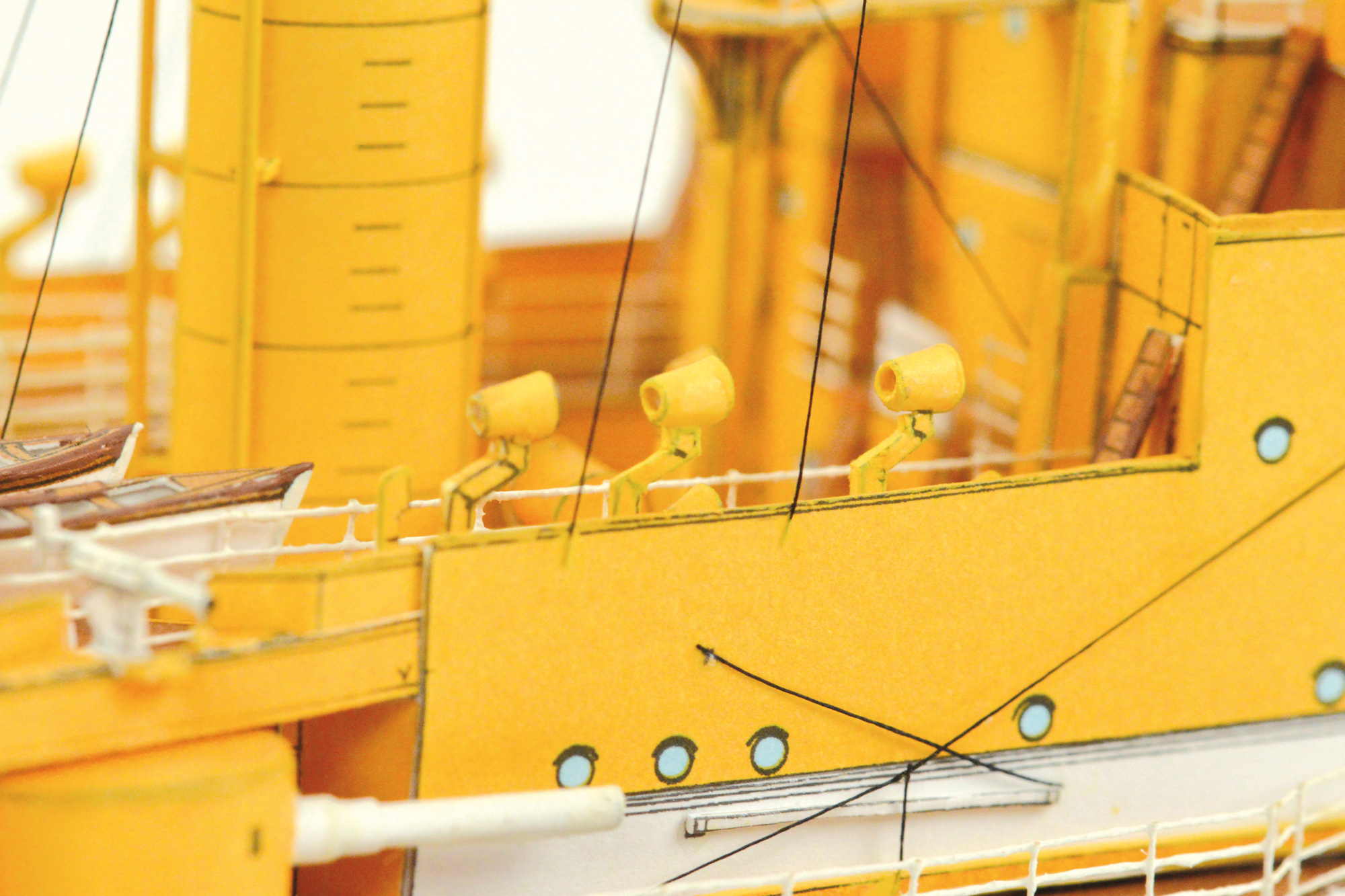
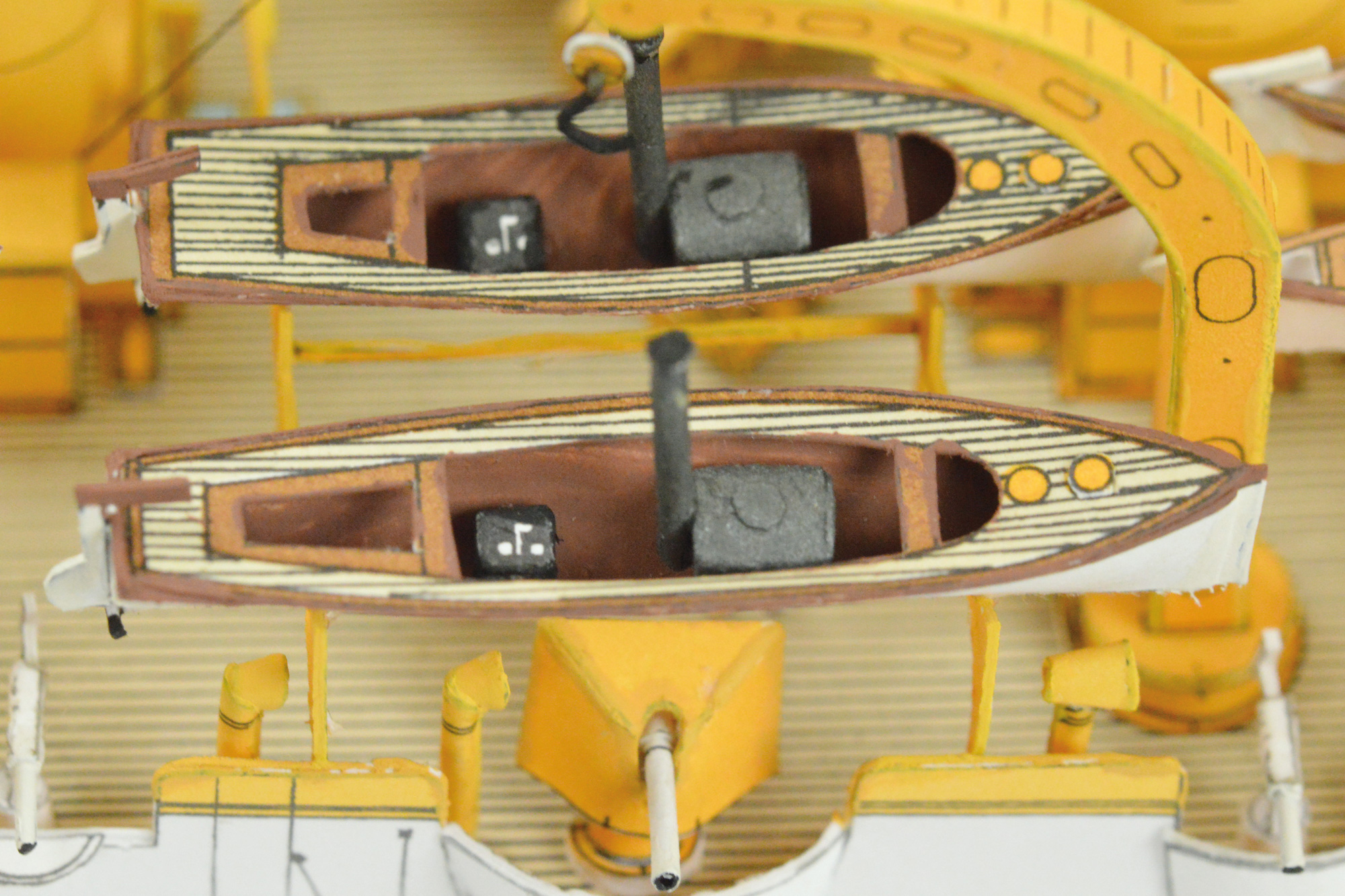
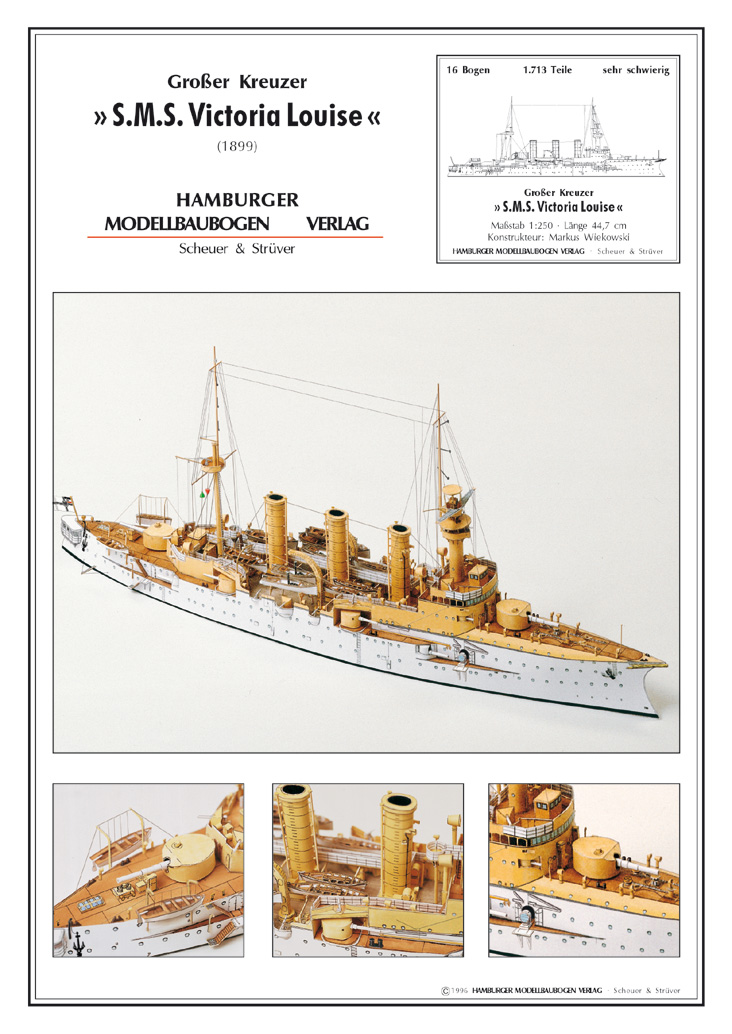
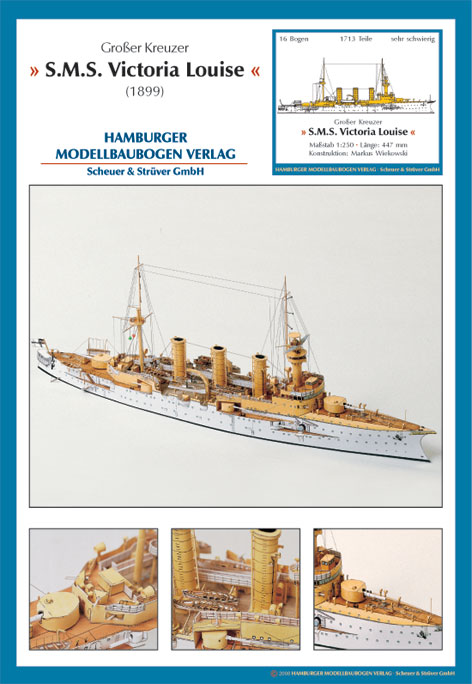



 fentens papermodels
fentens papermodels fentens papermodels Australia
fentens papermodels Australia Amazon.com
Amazon.com